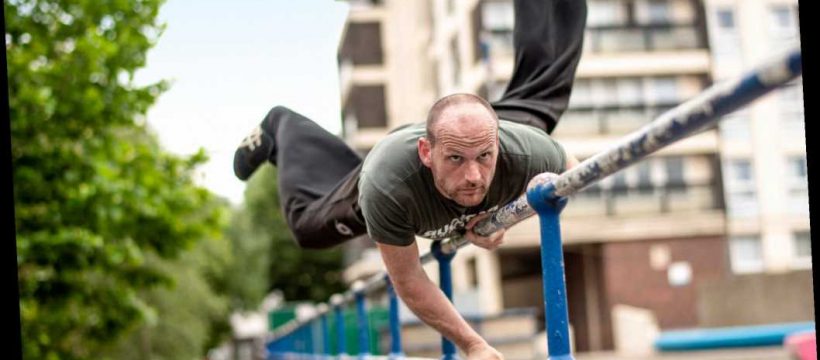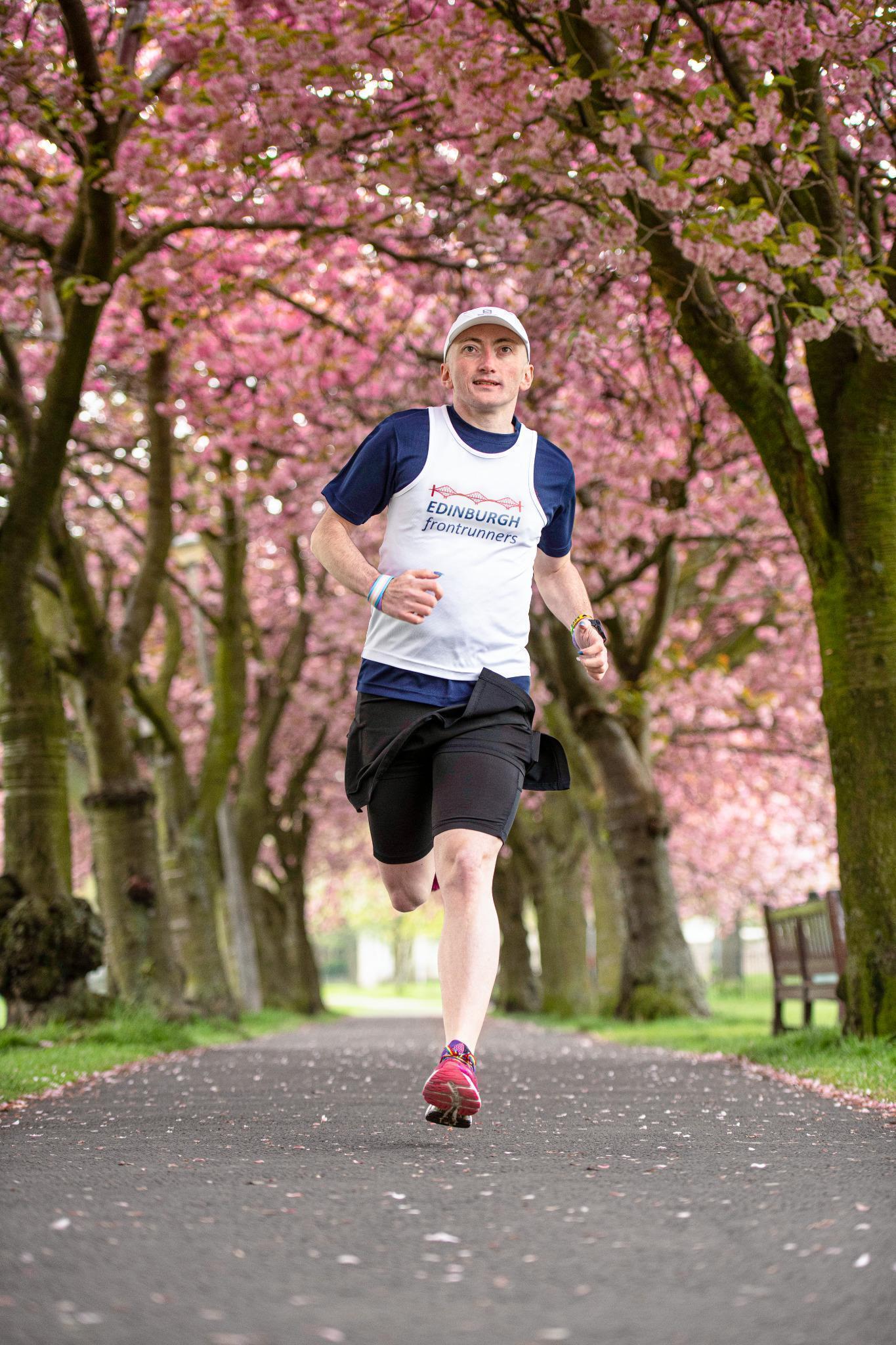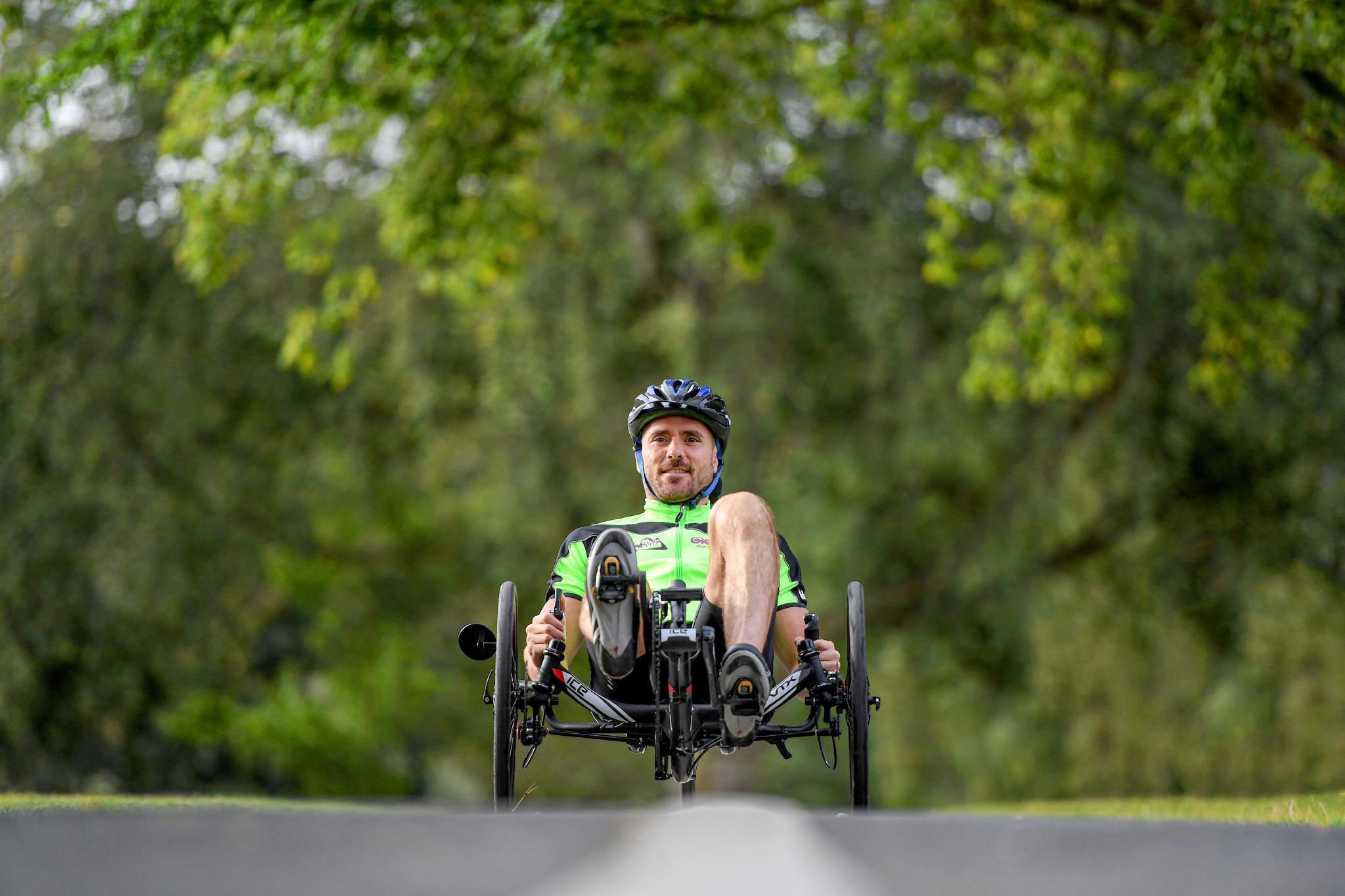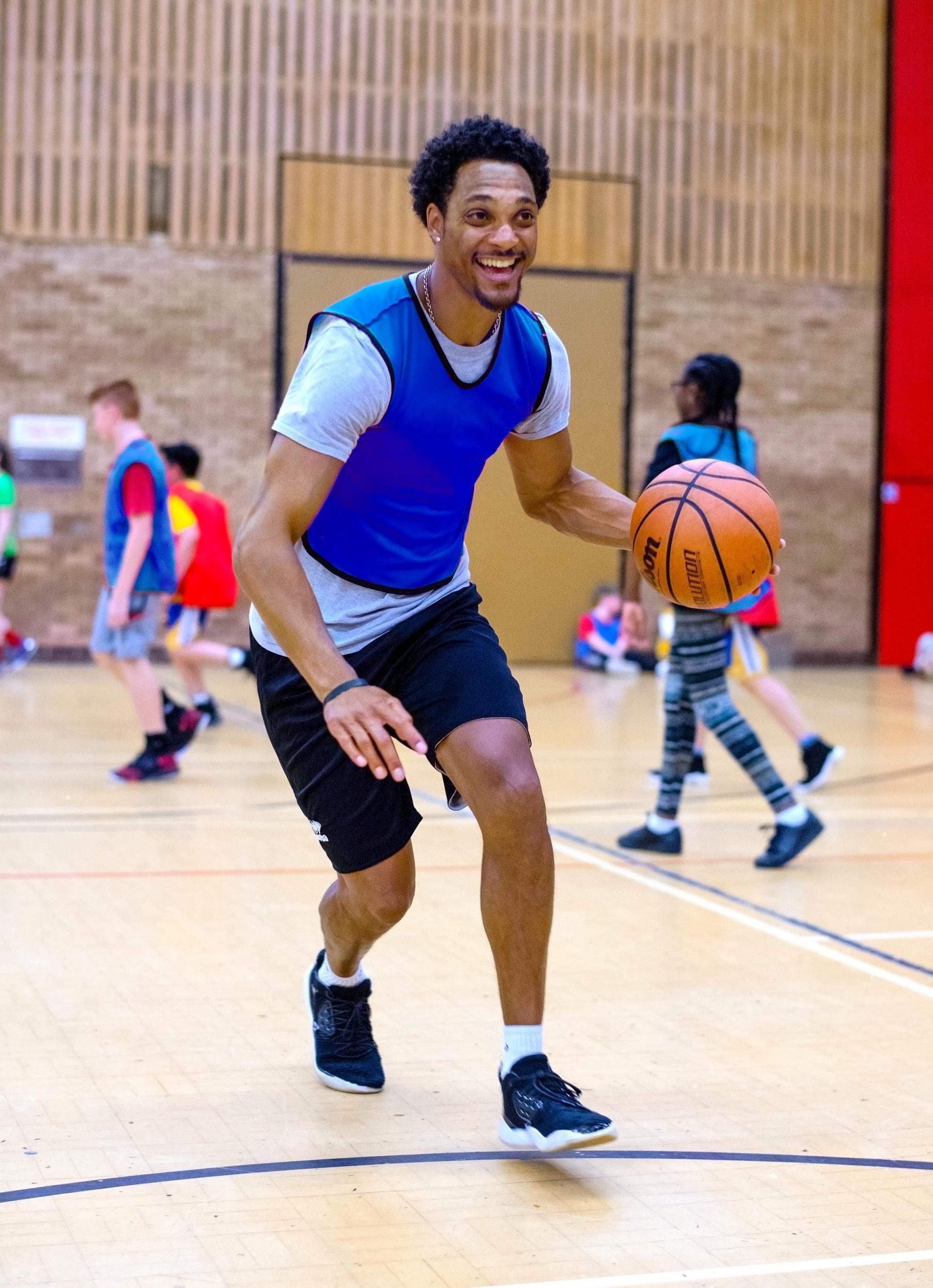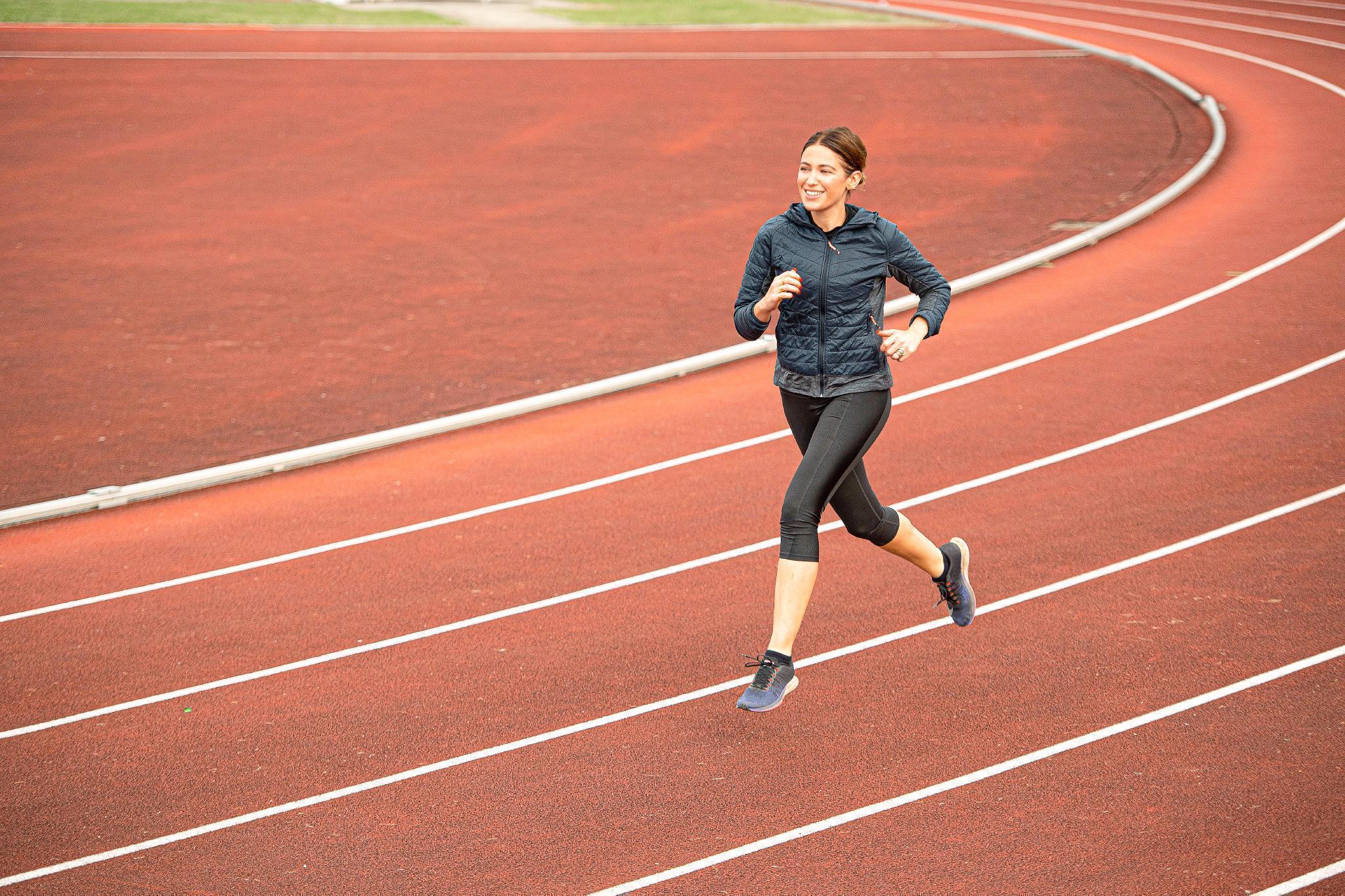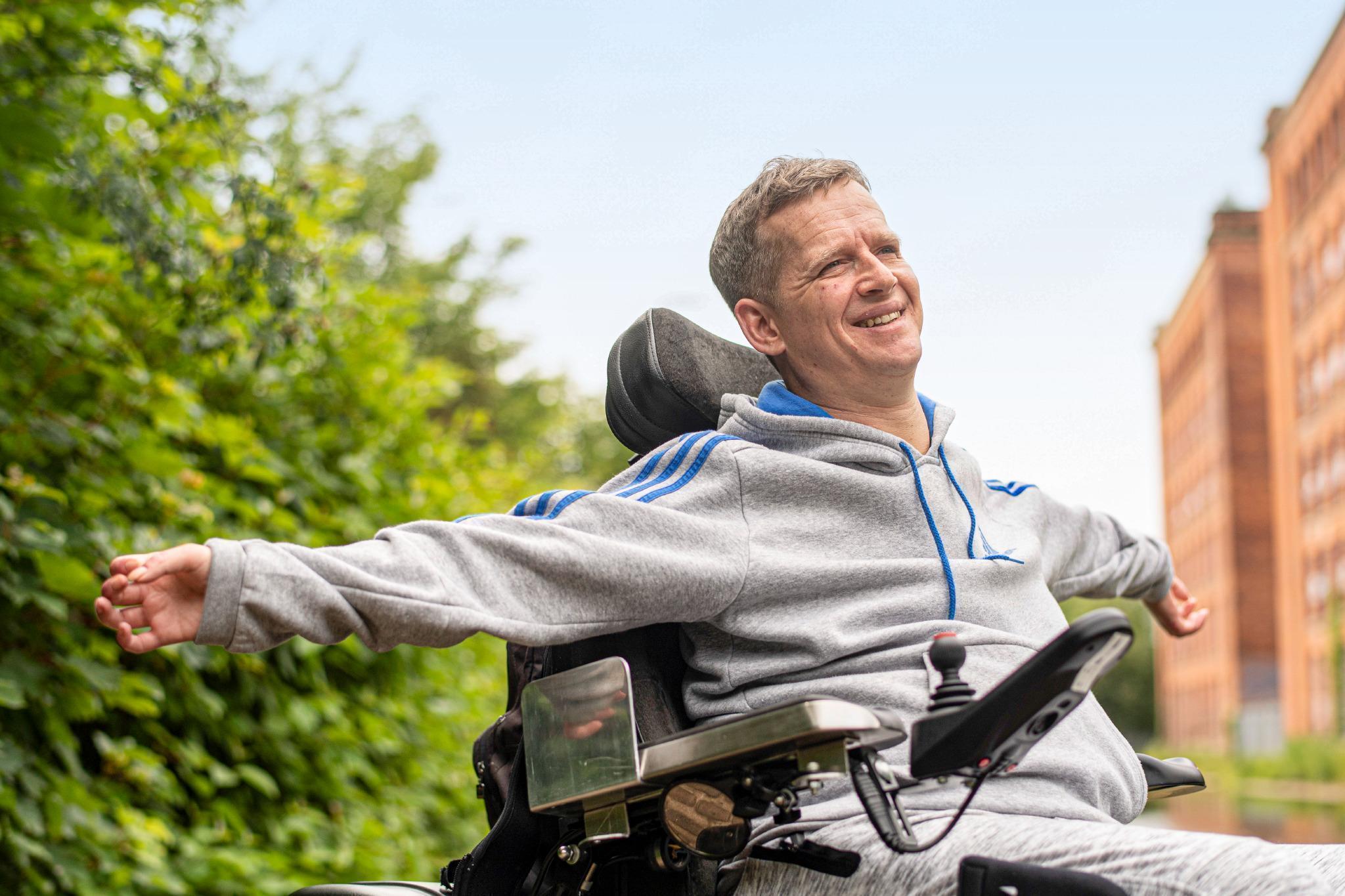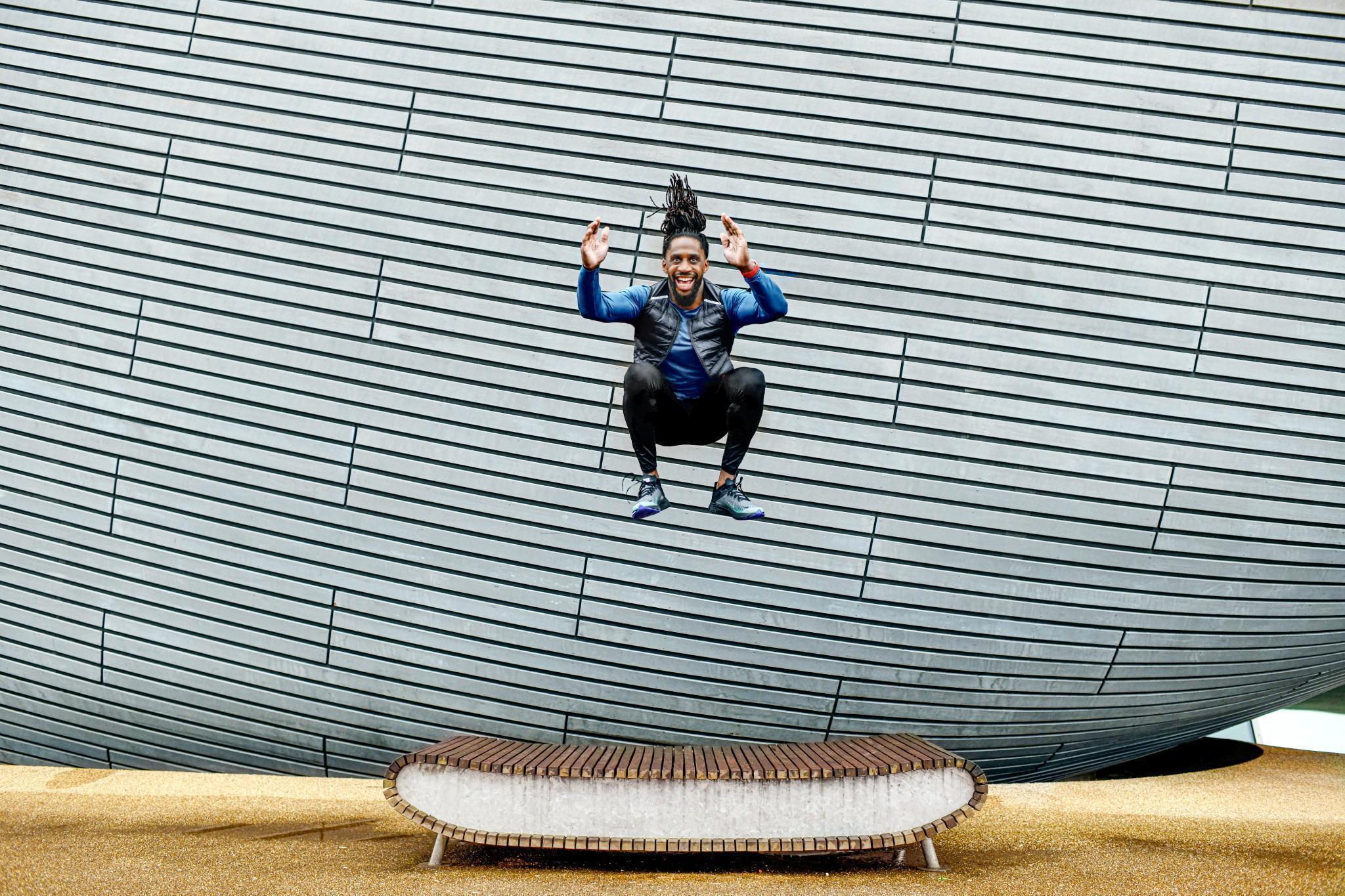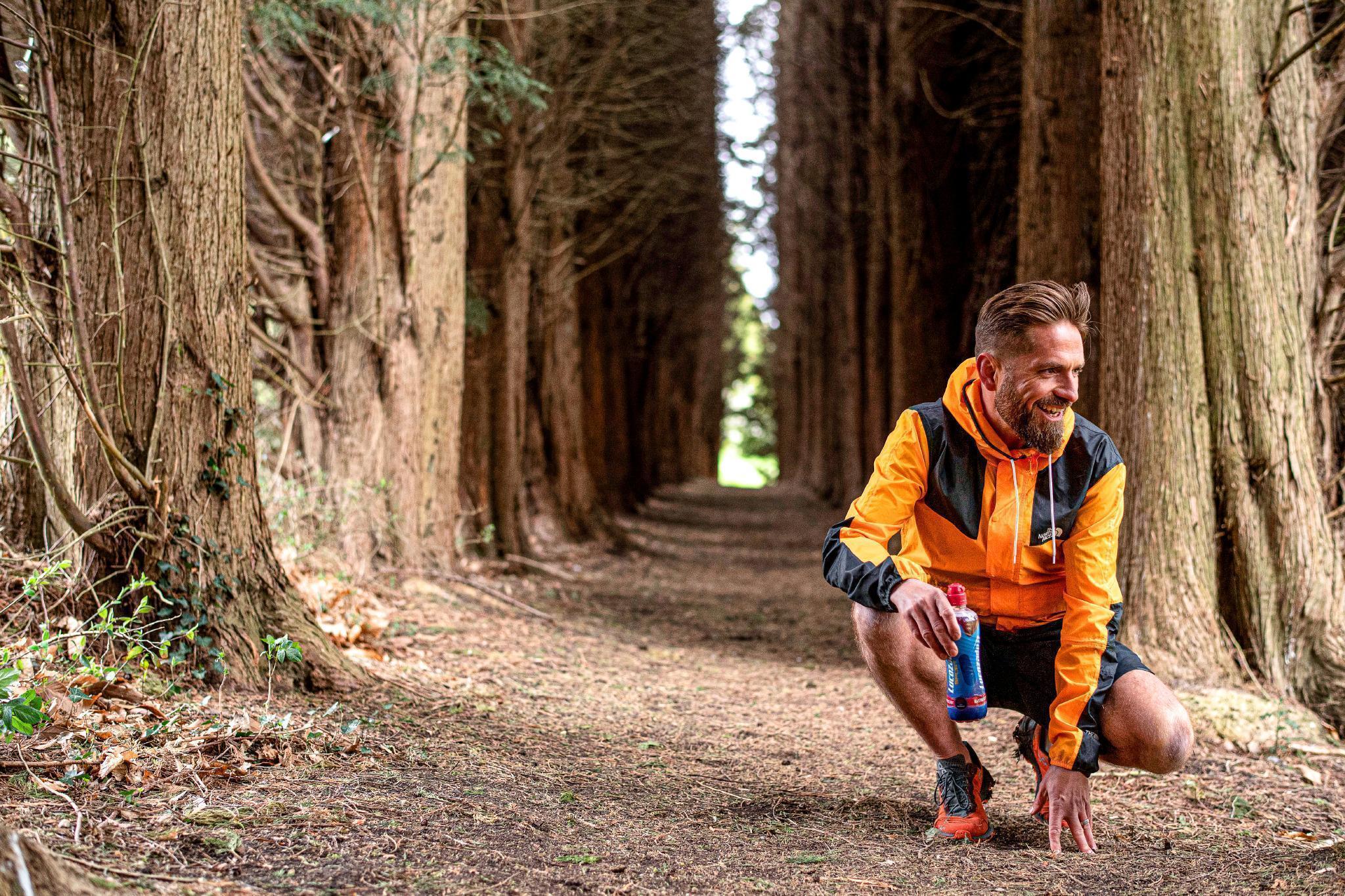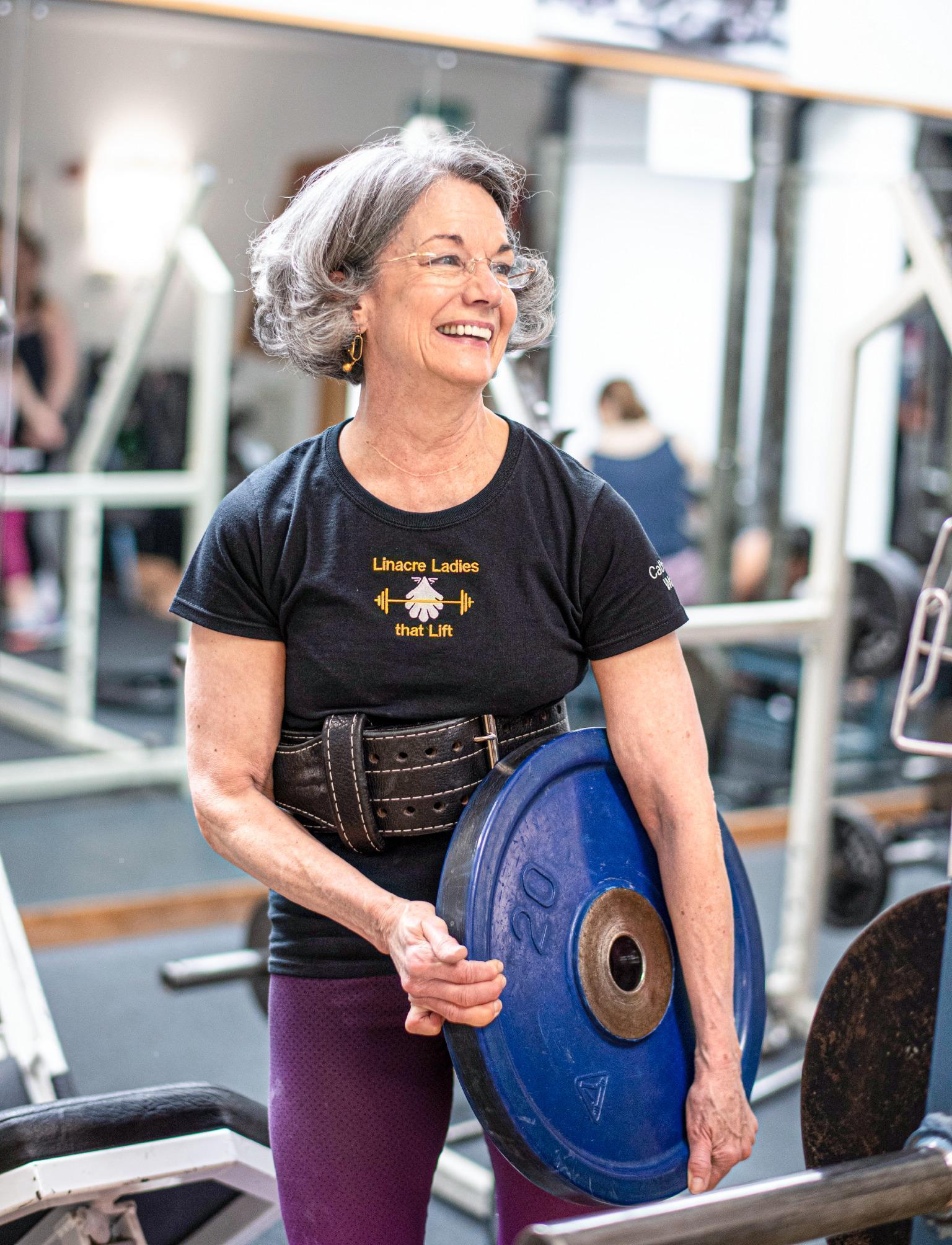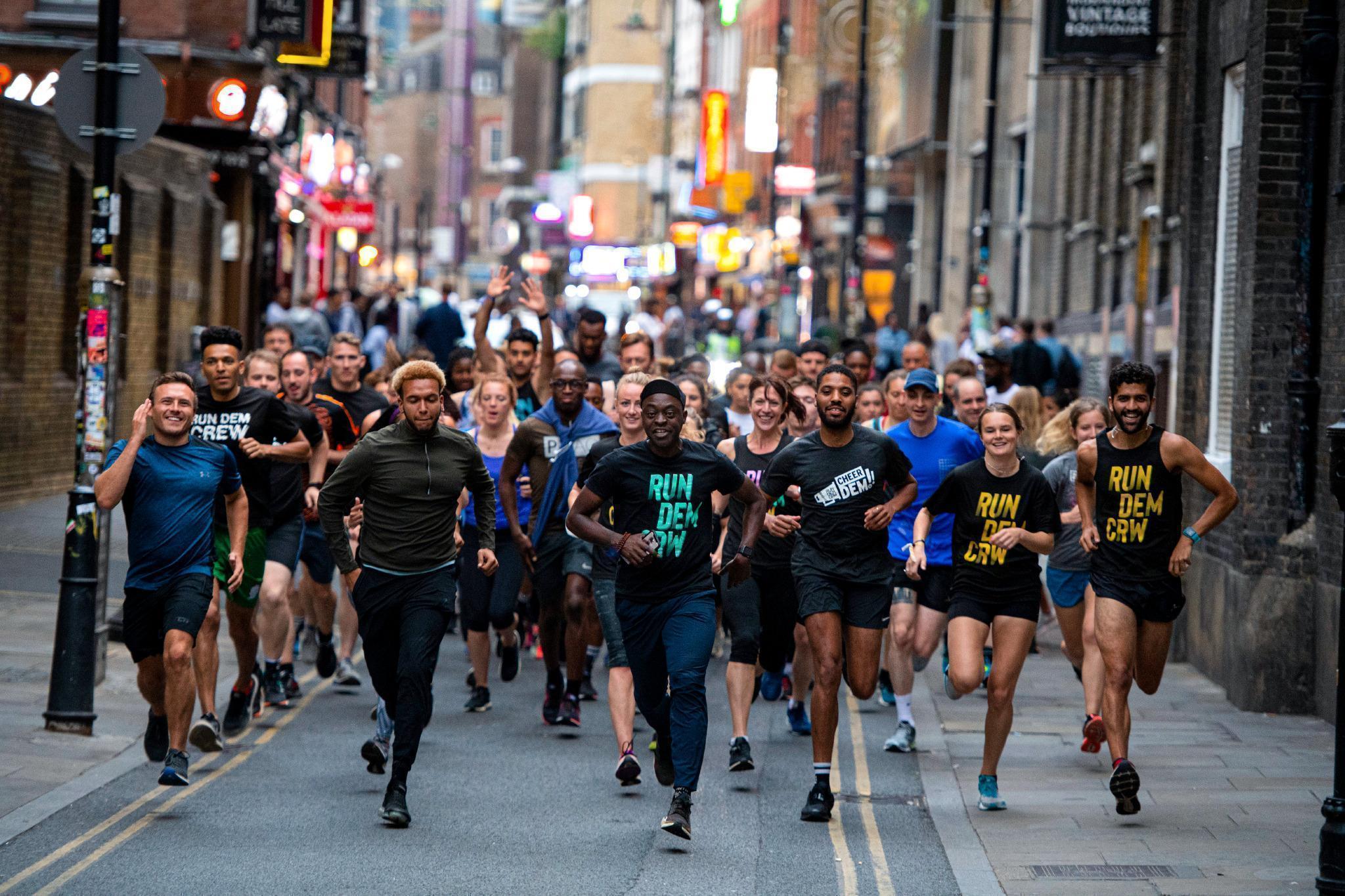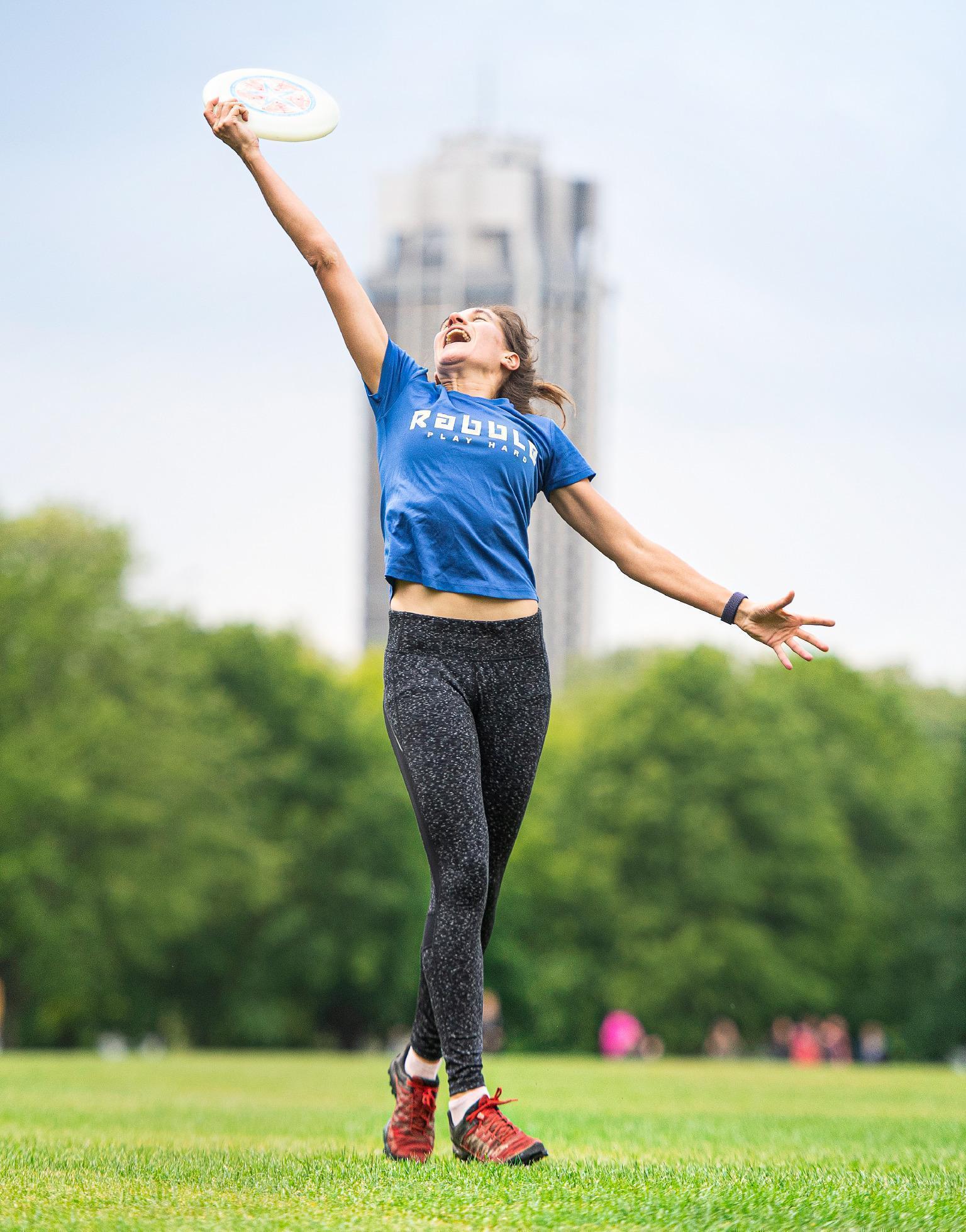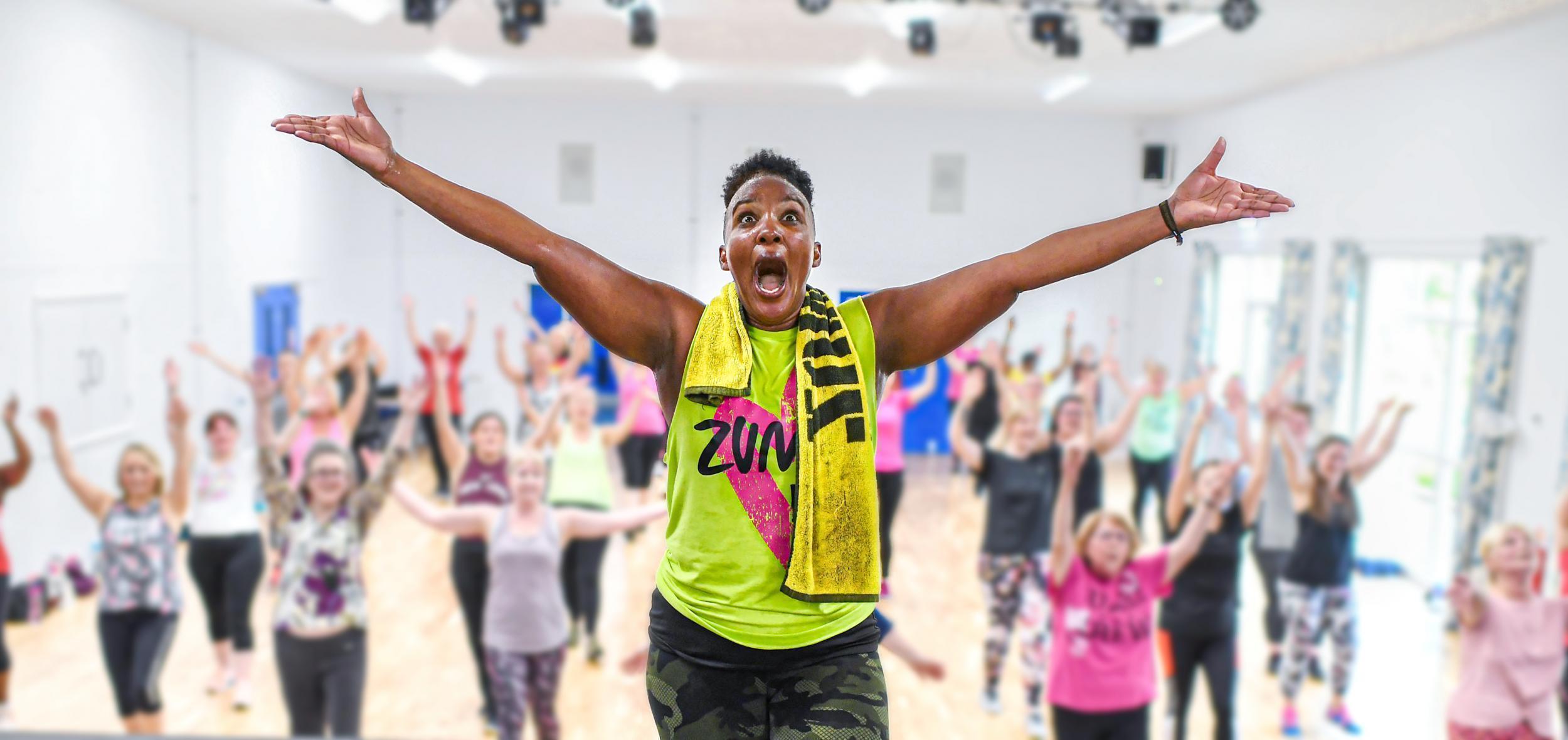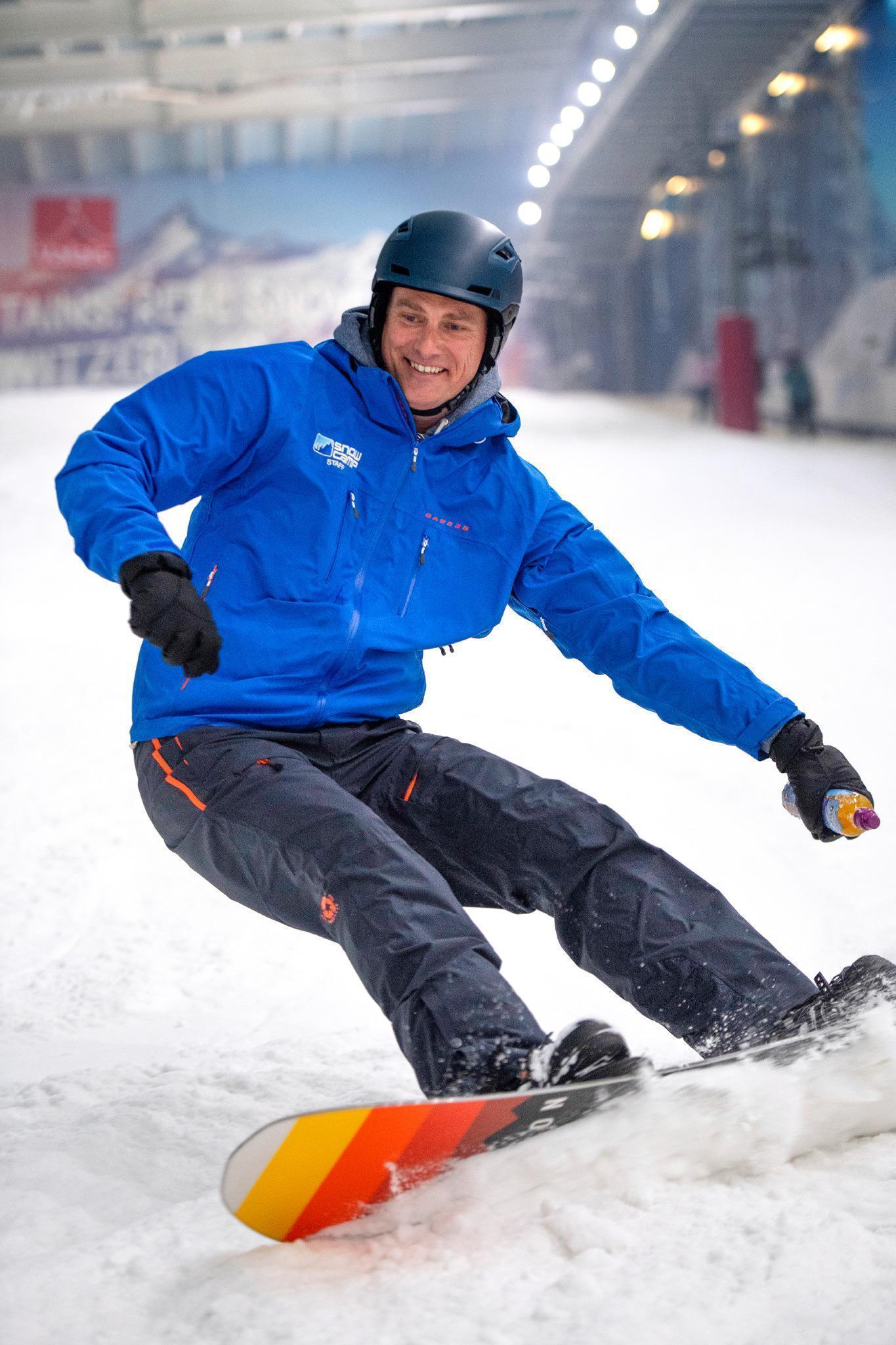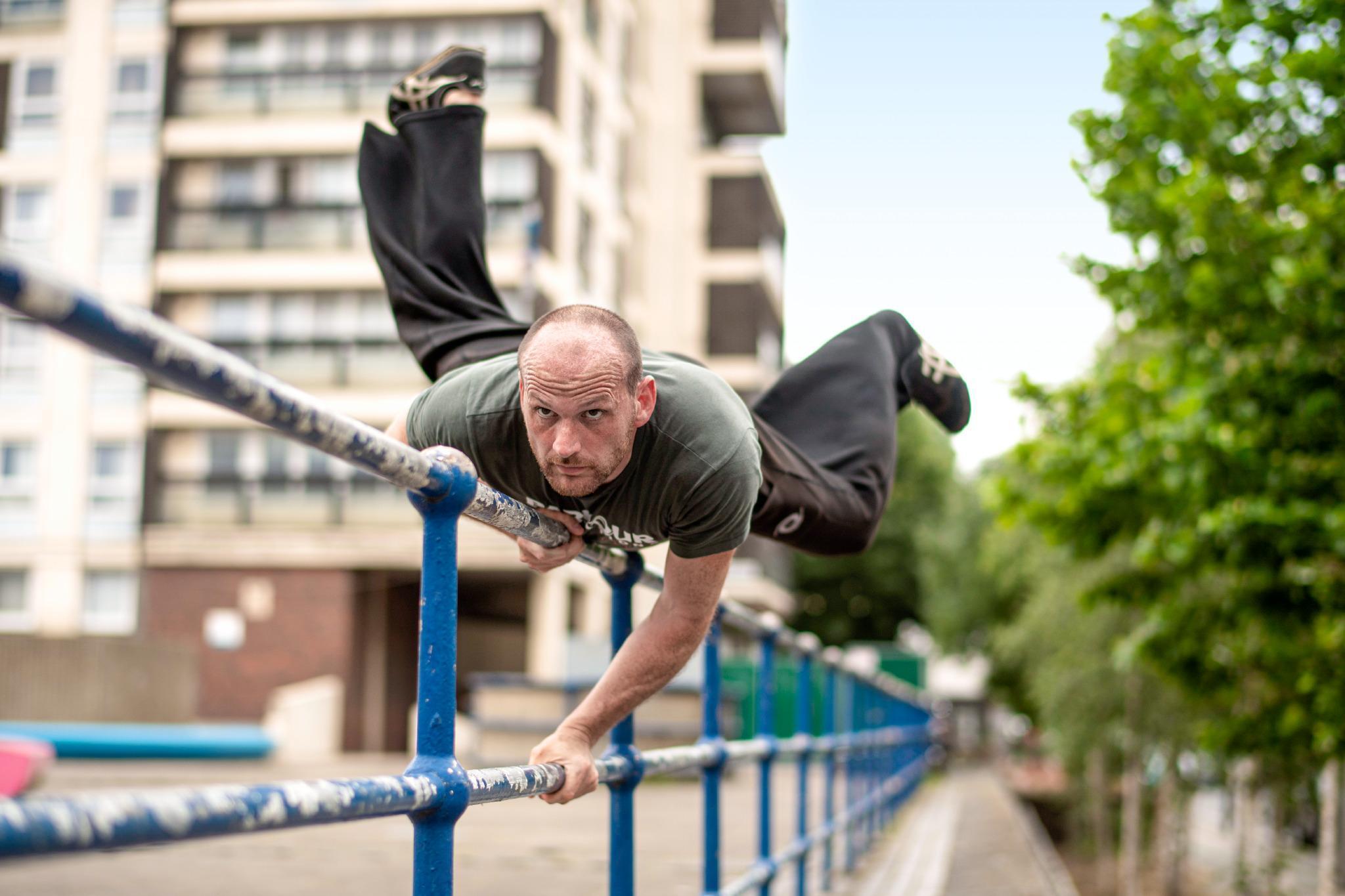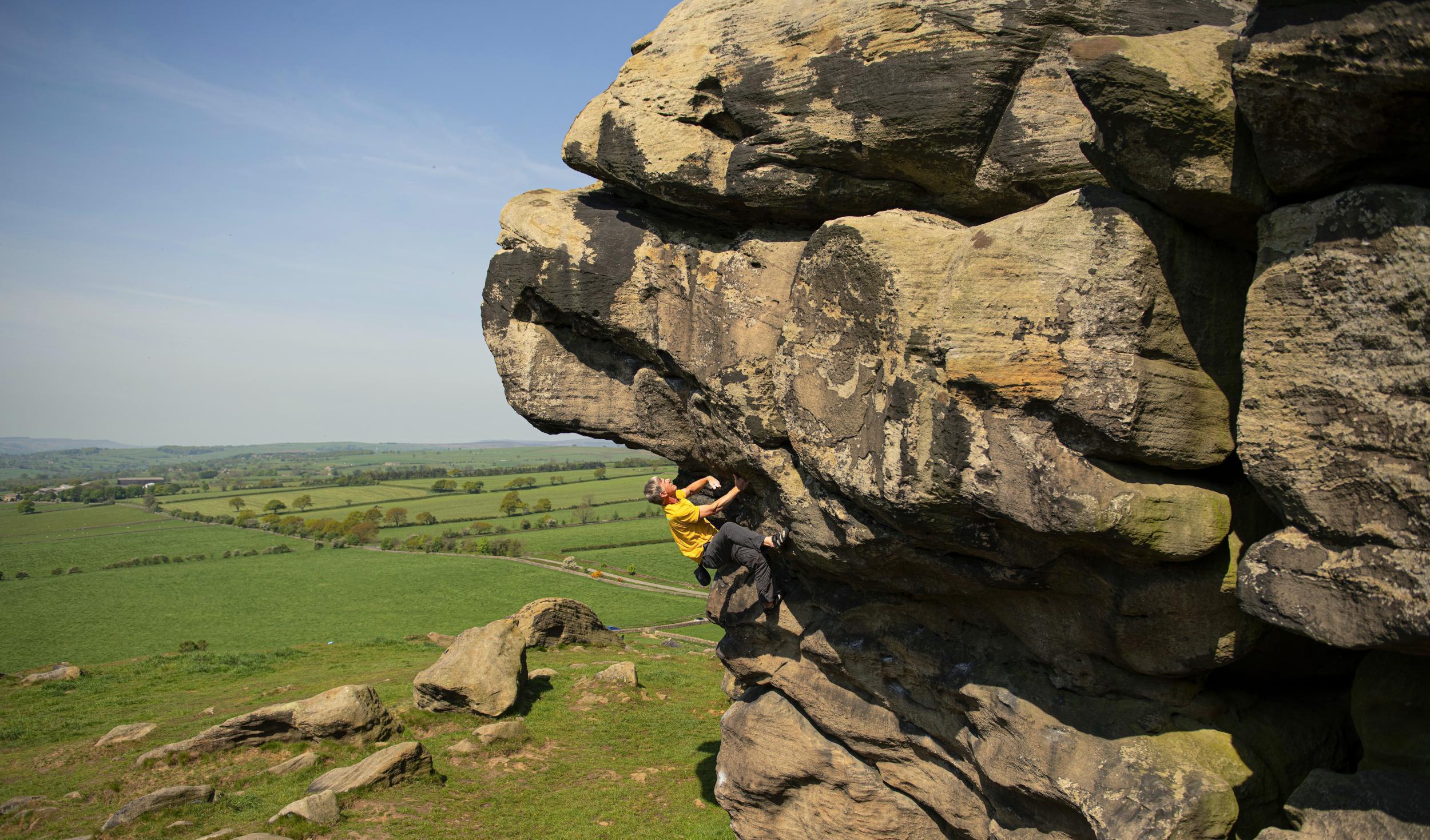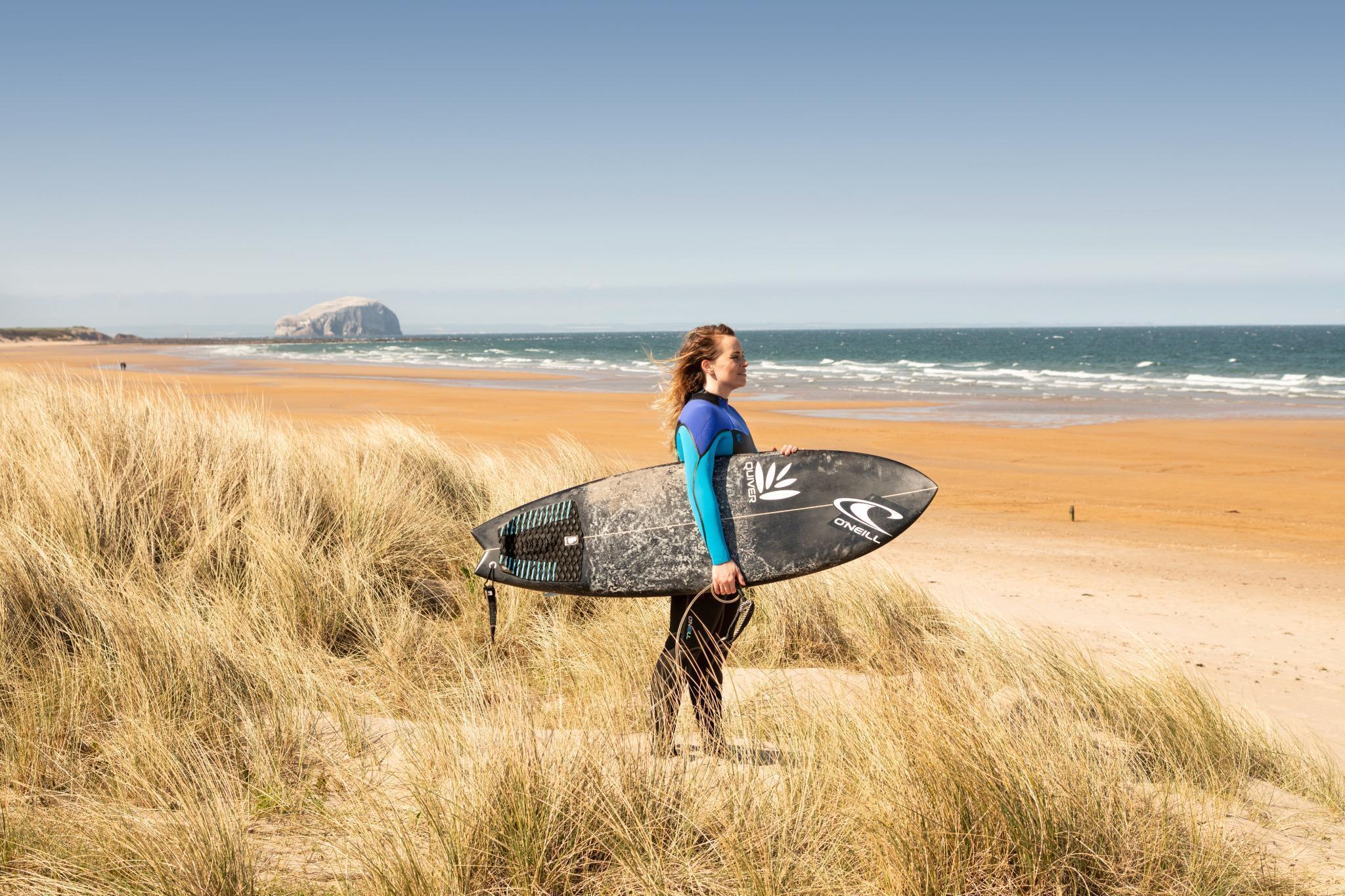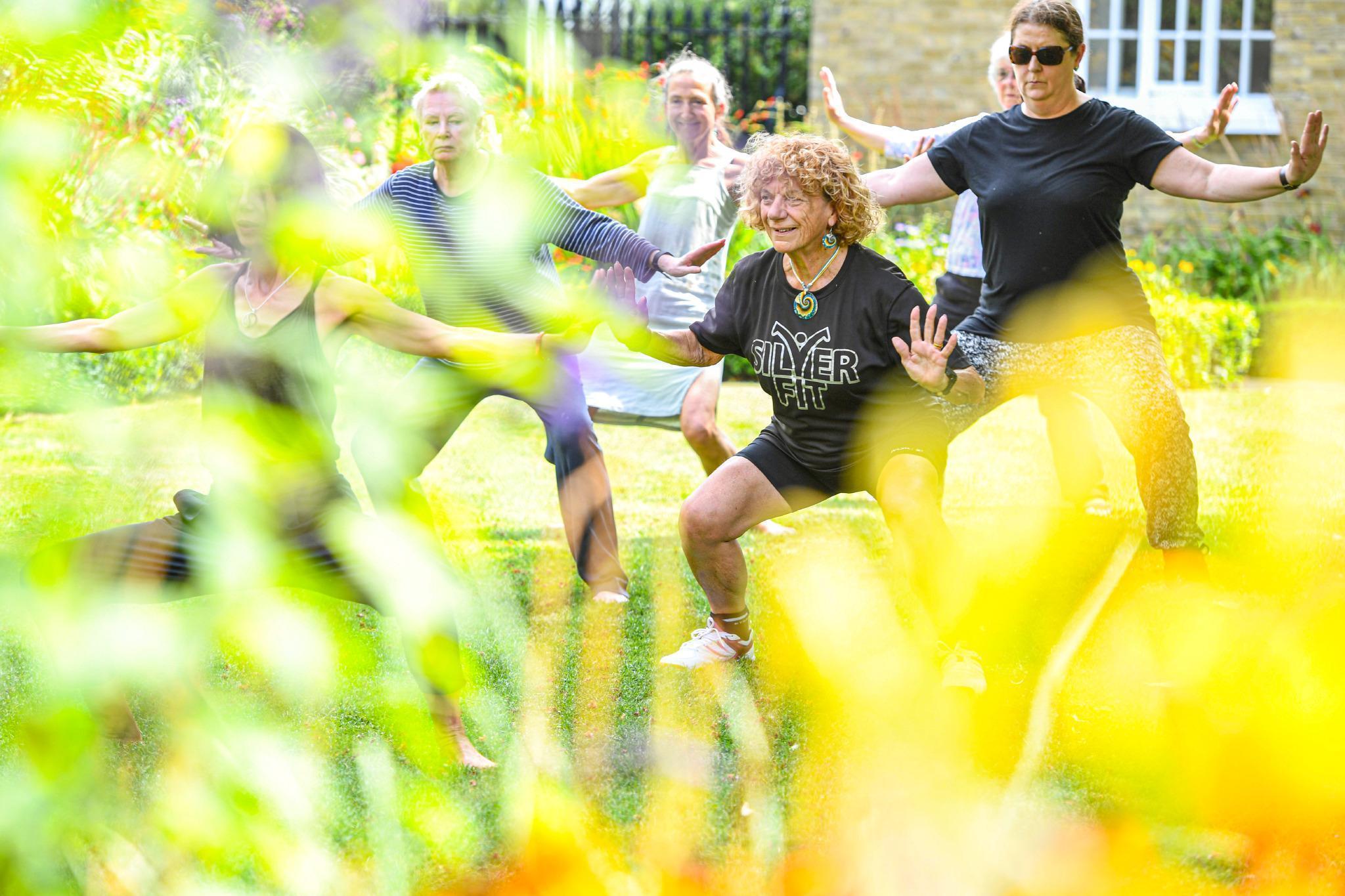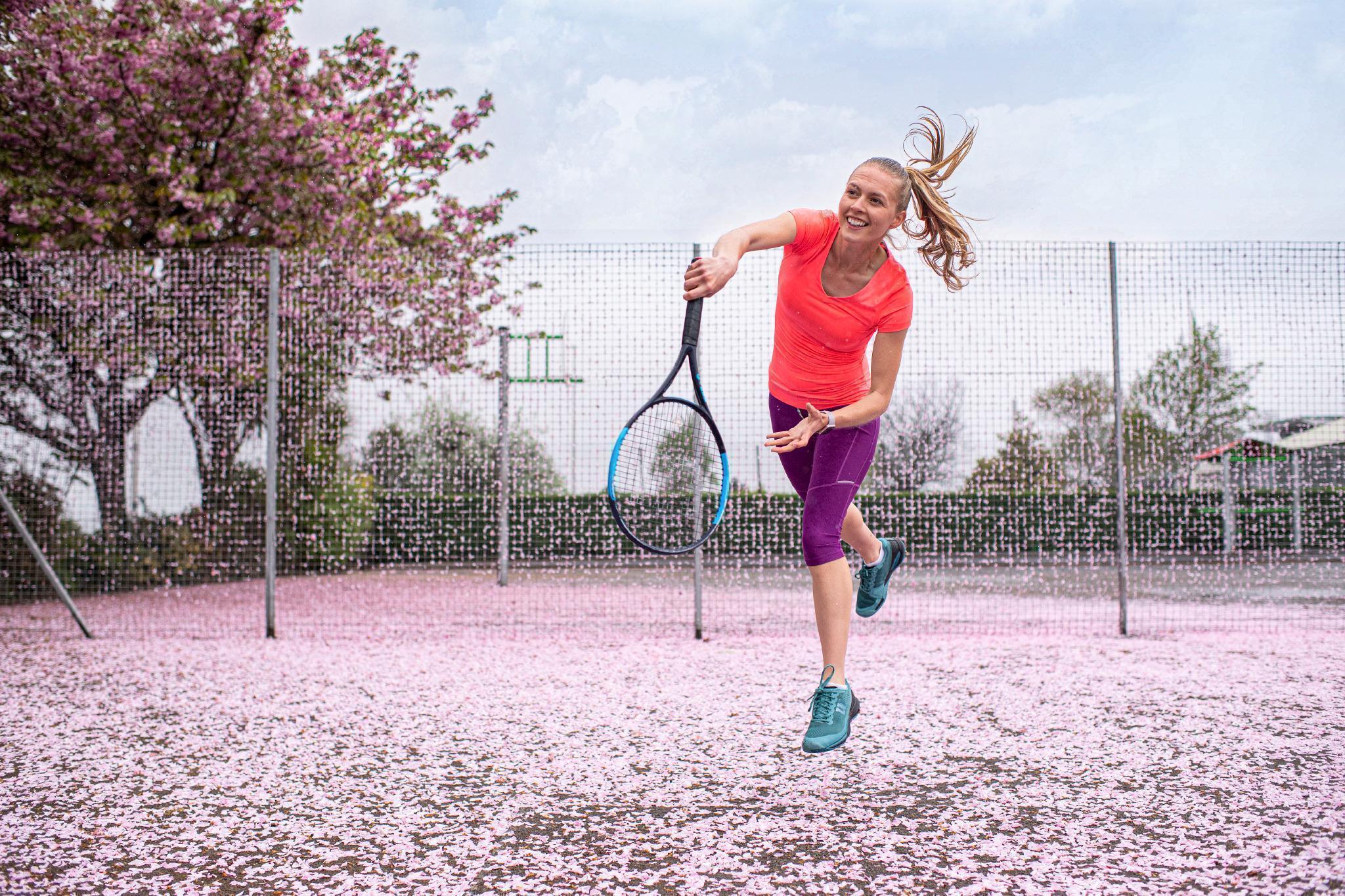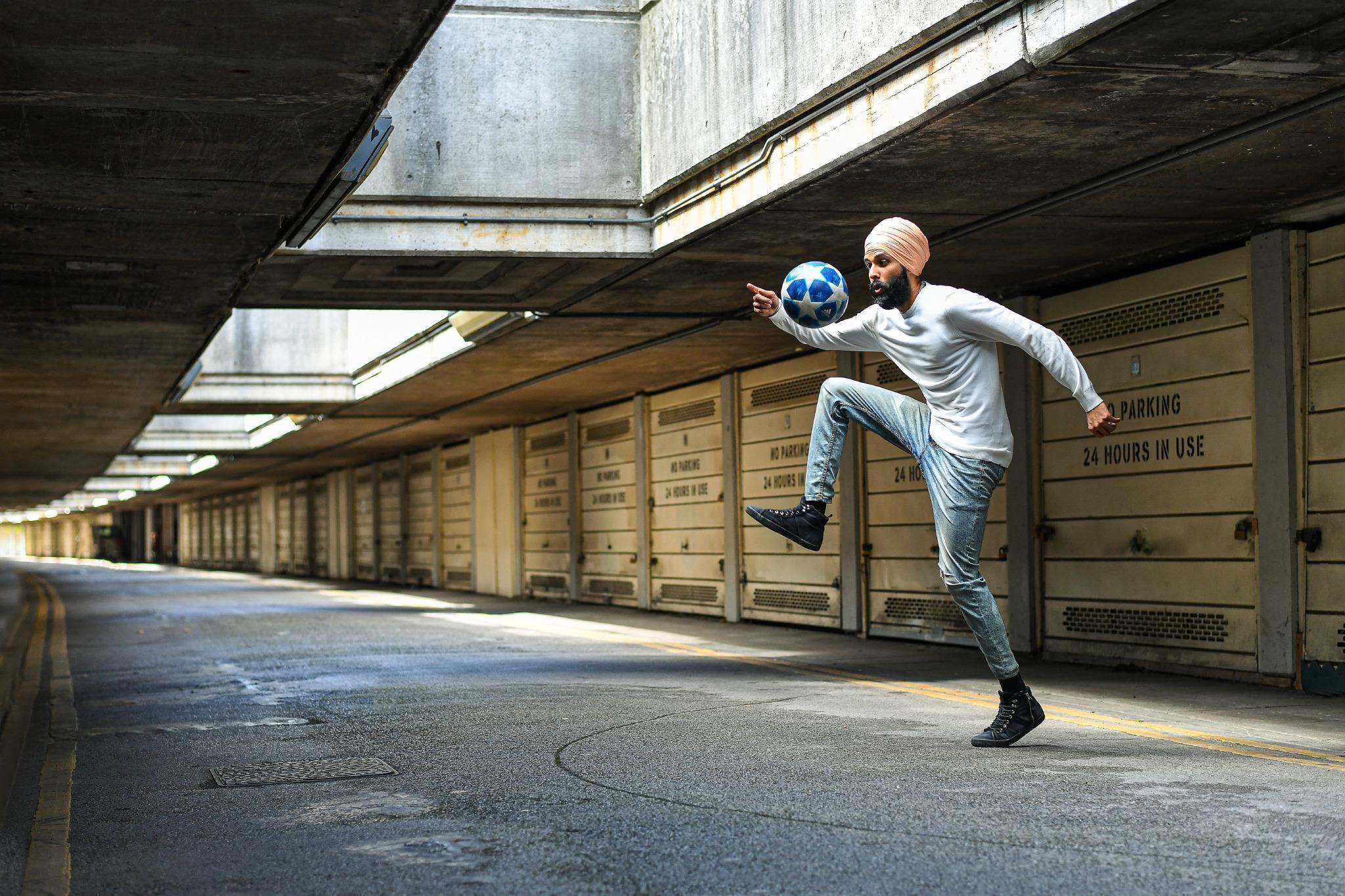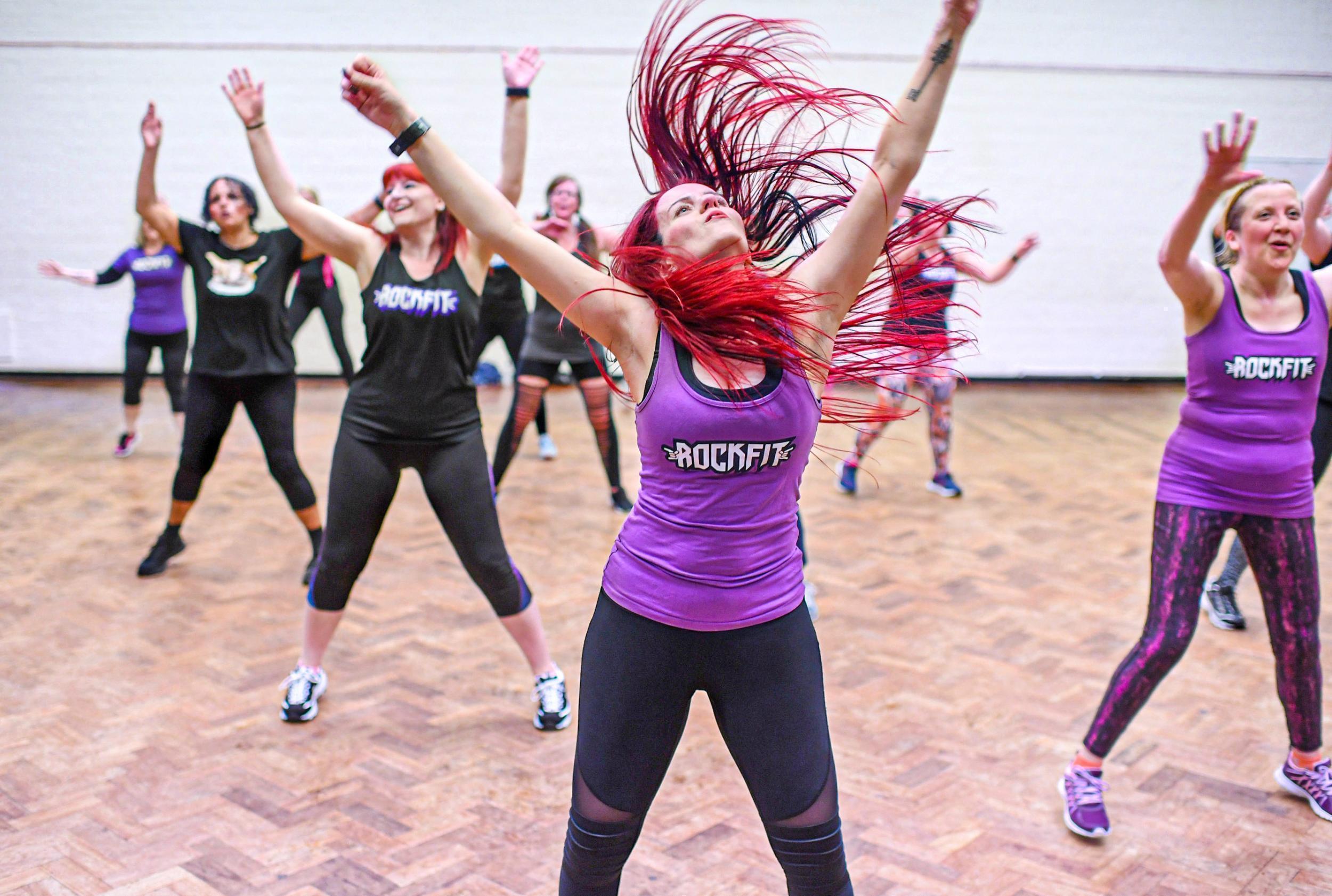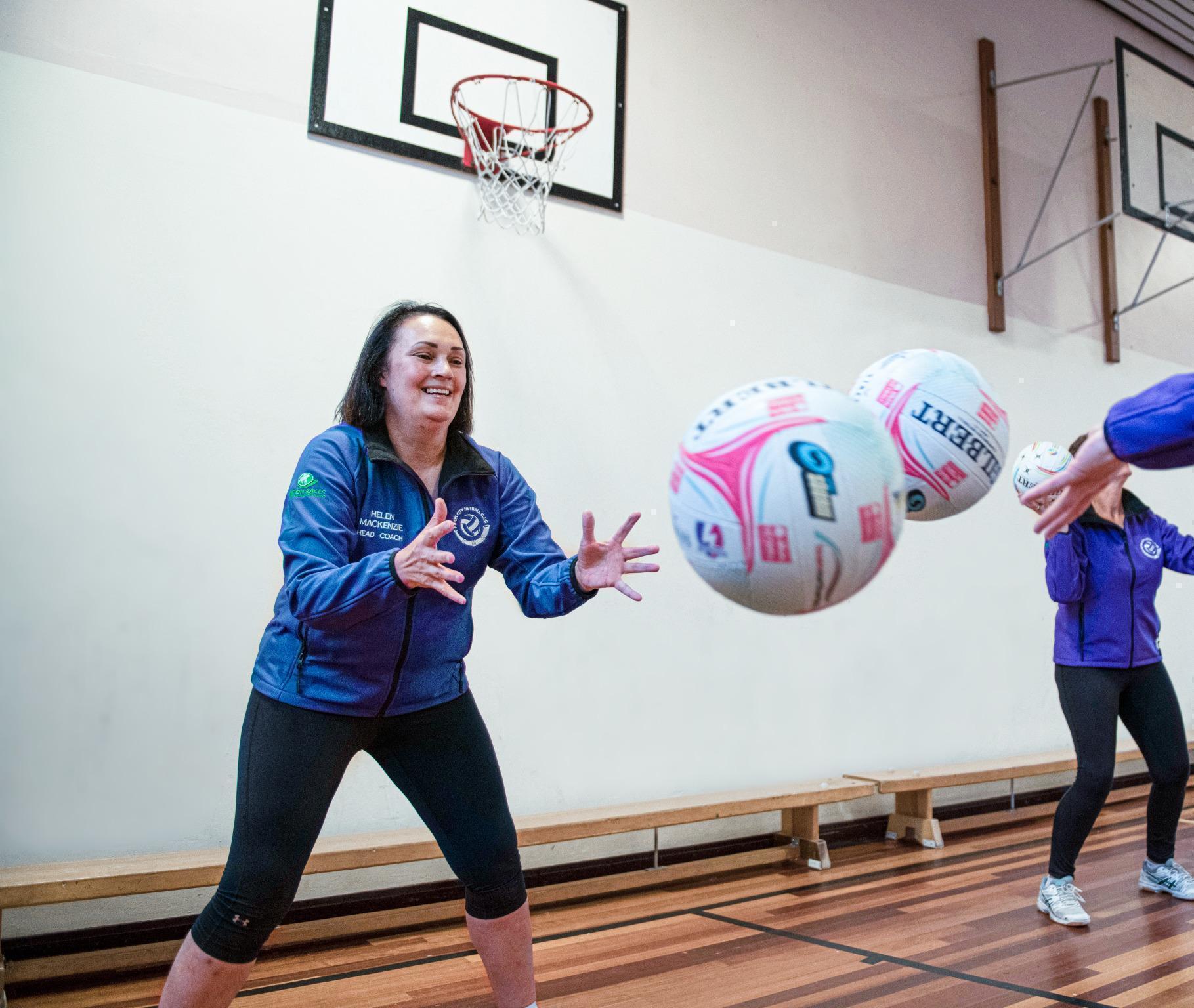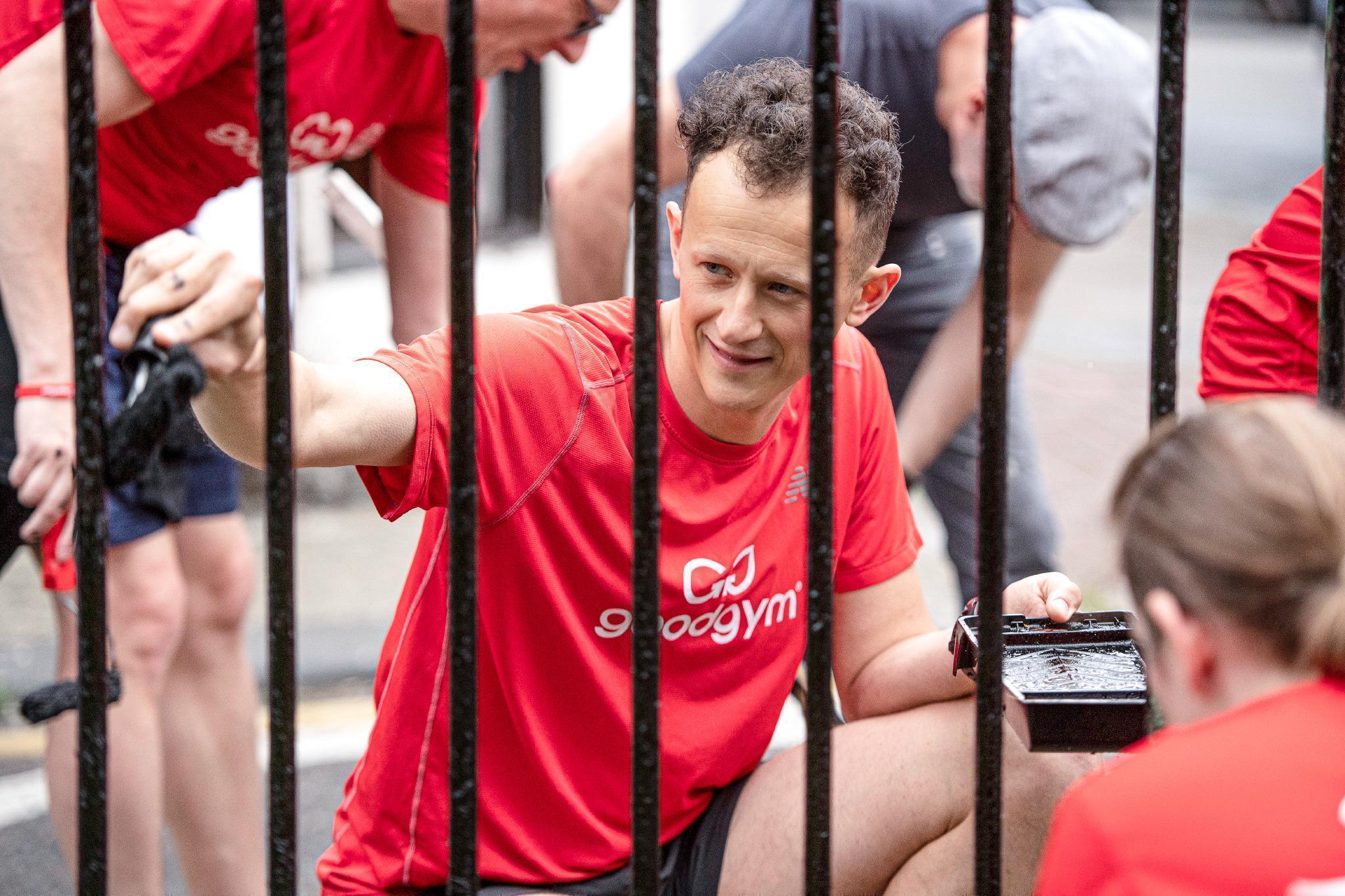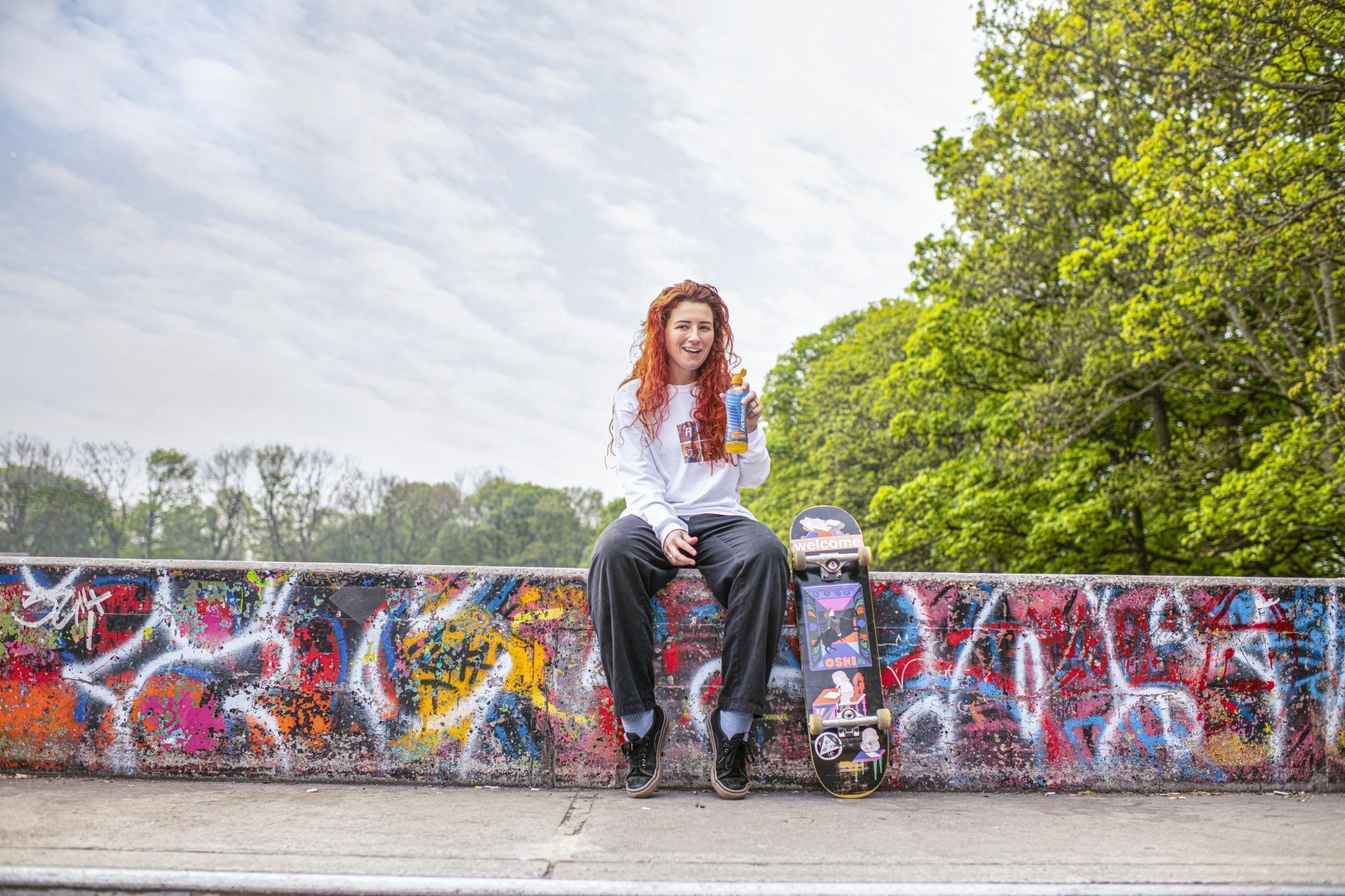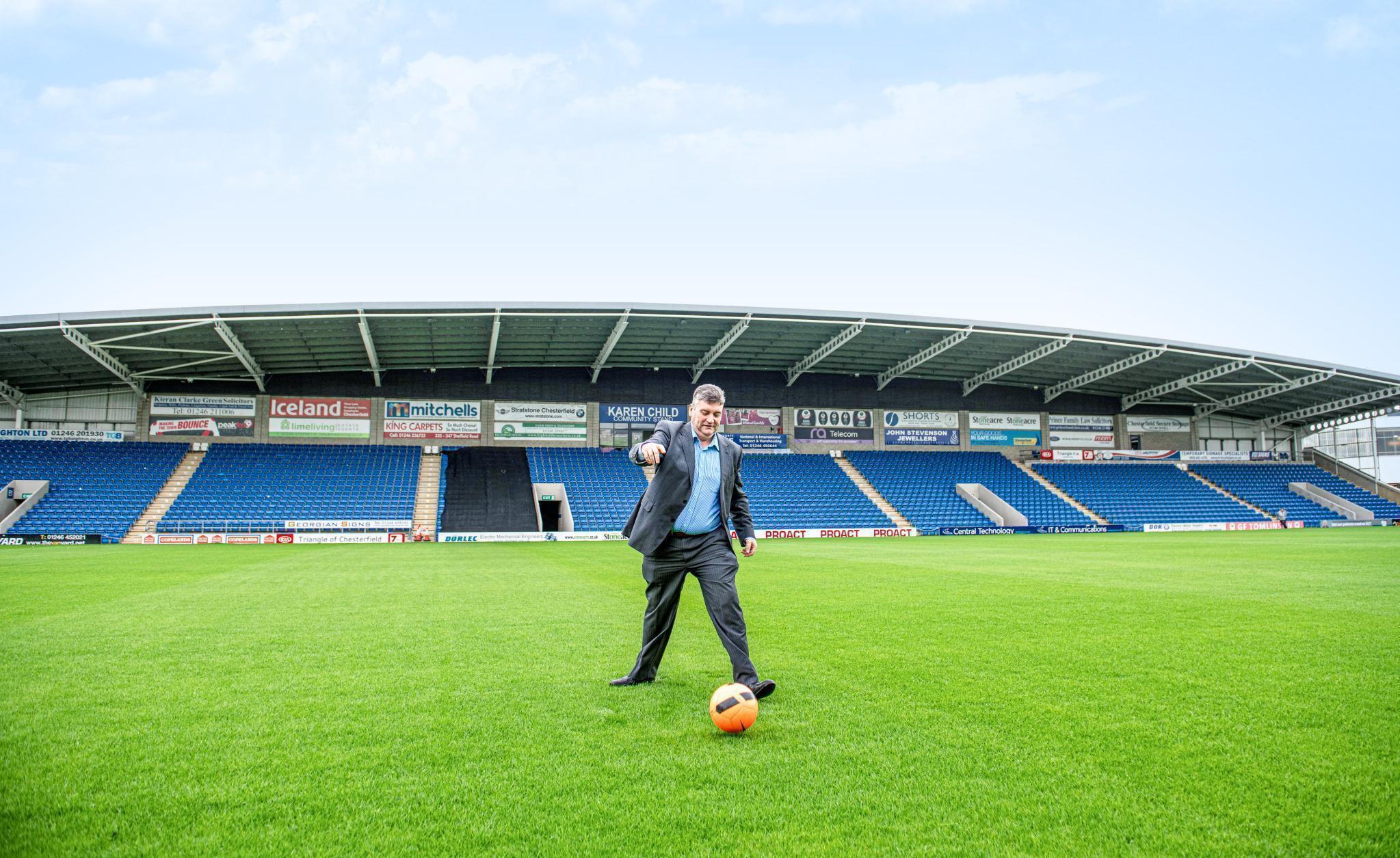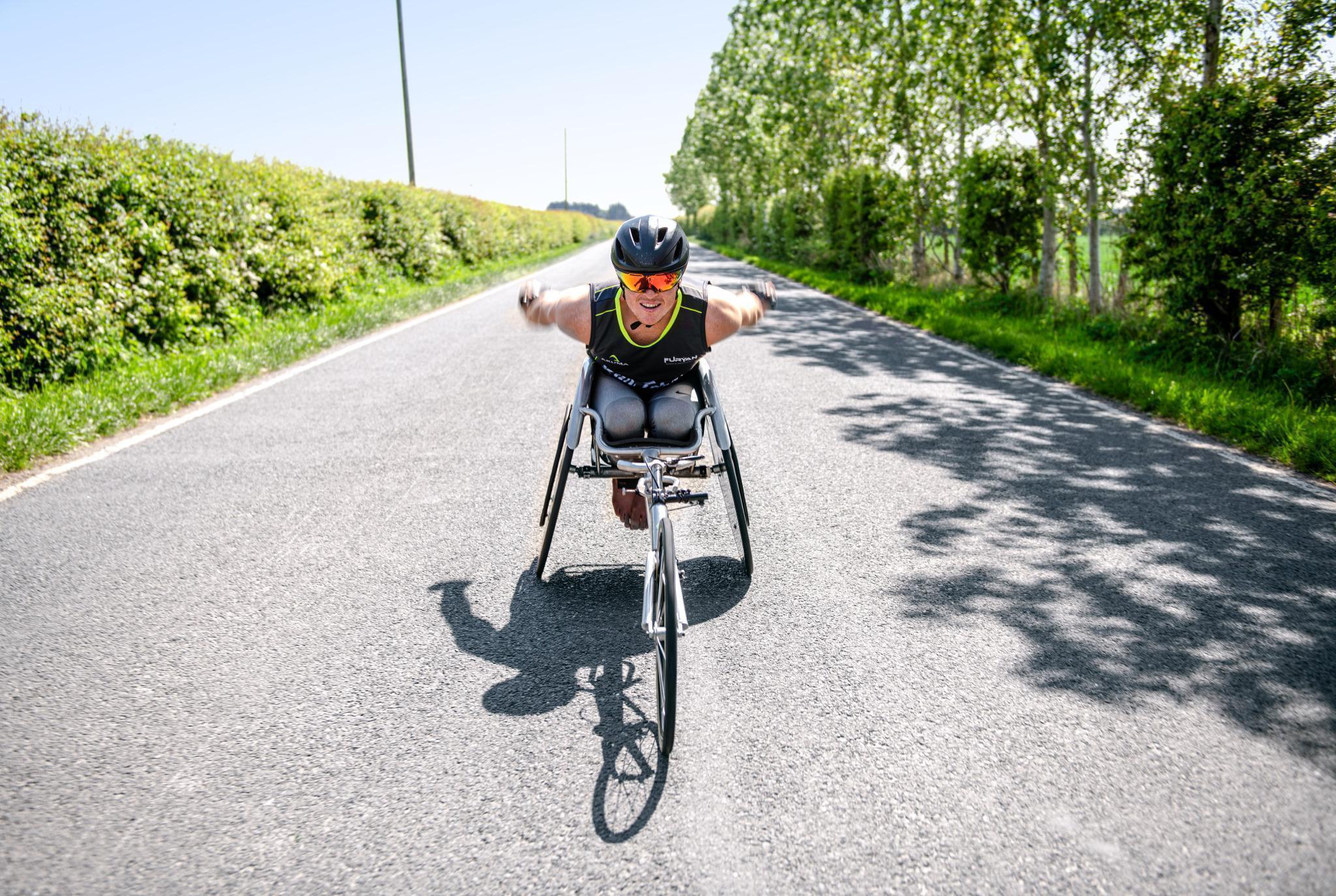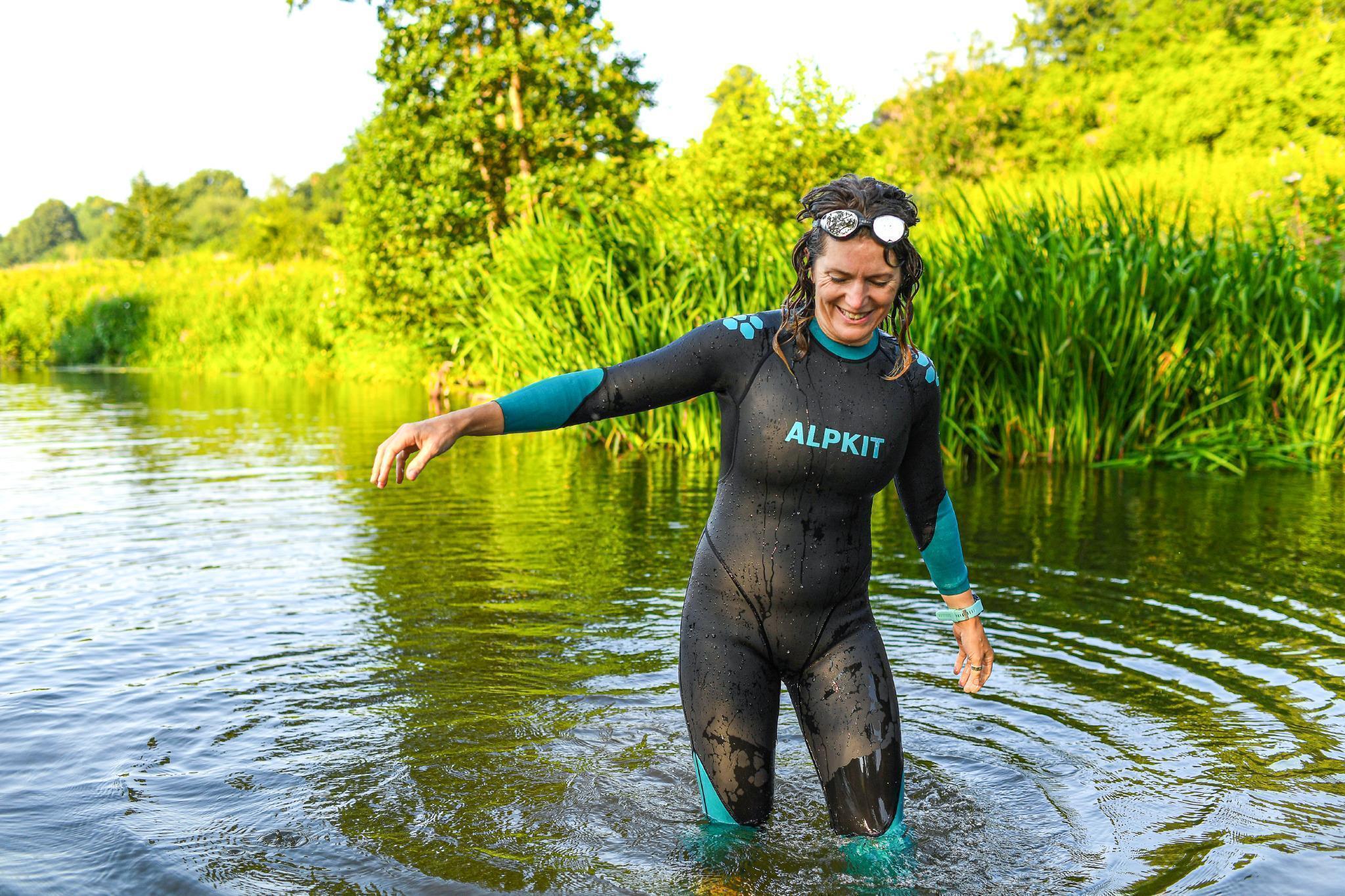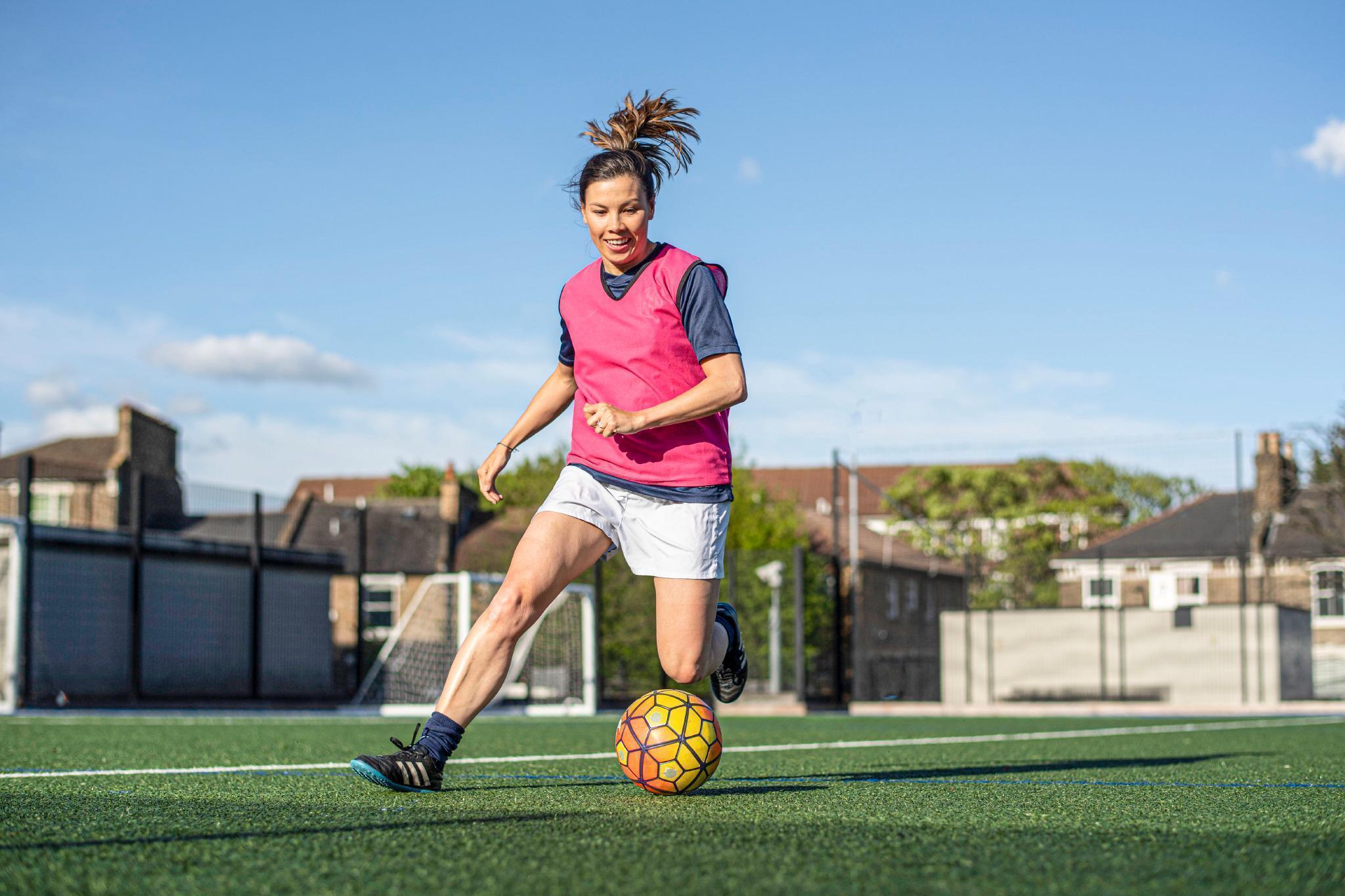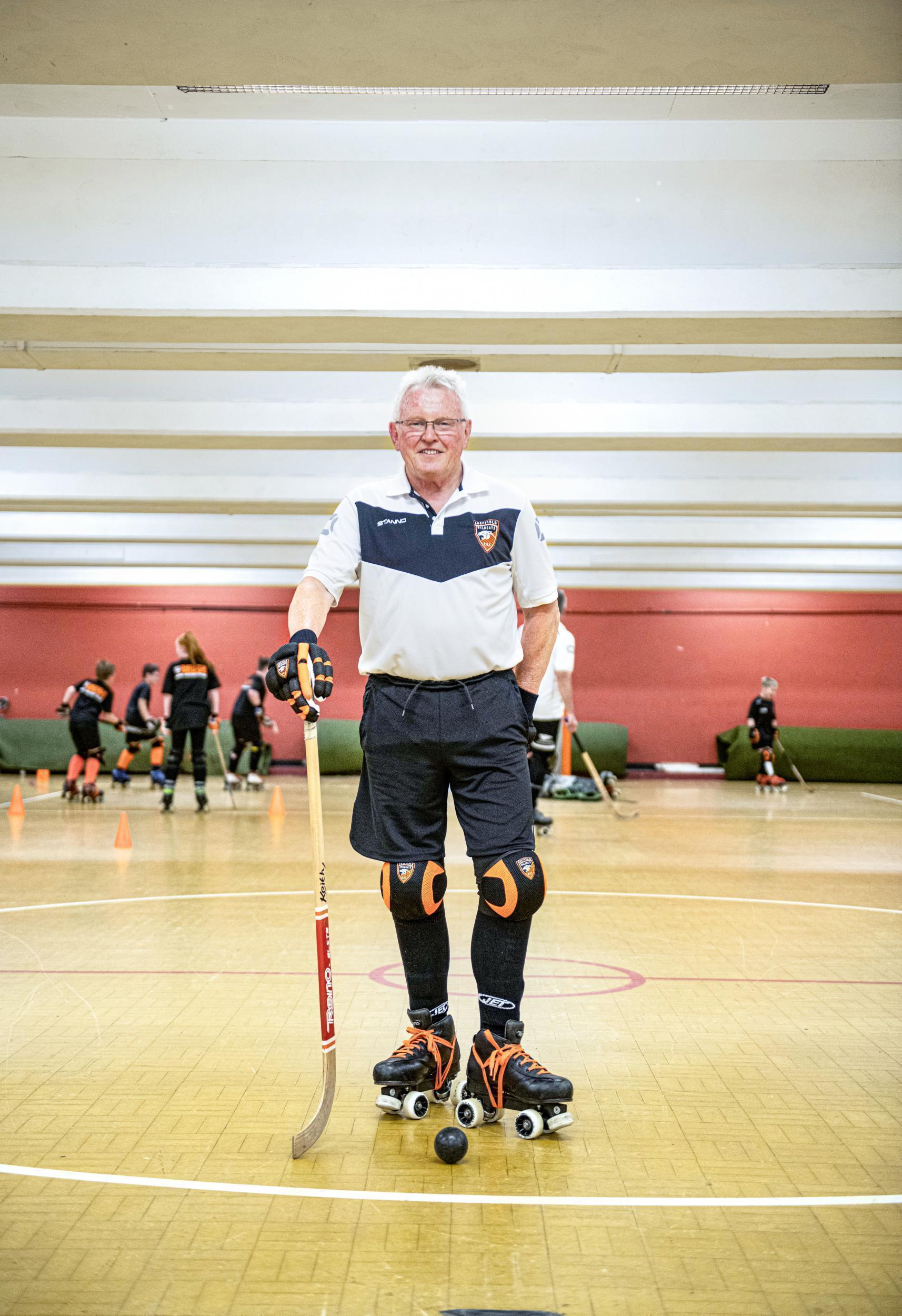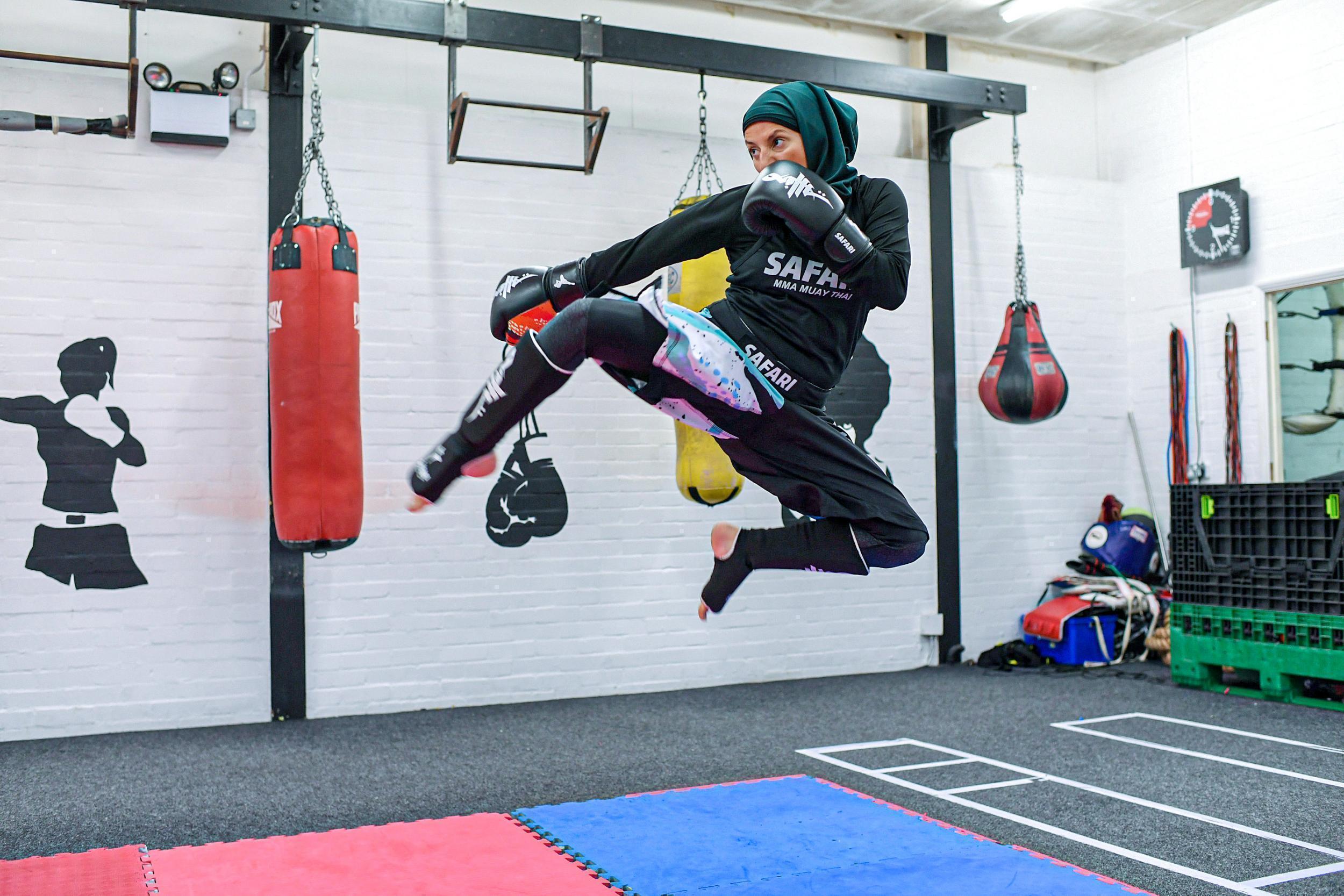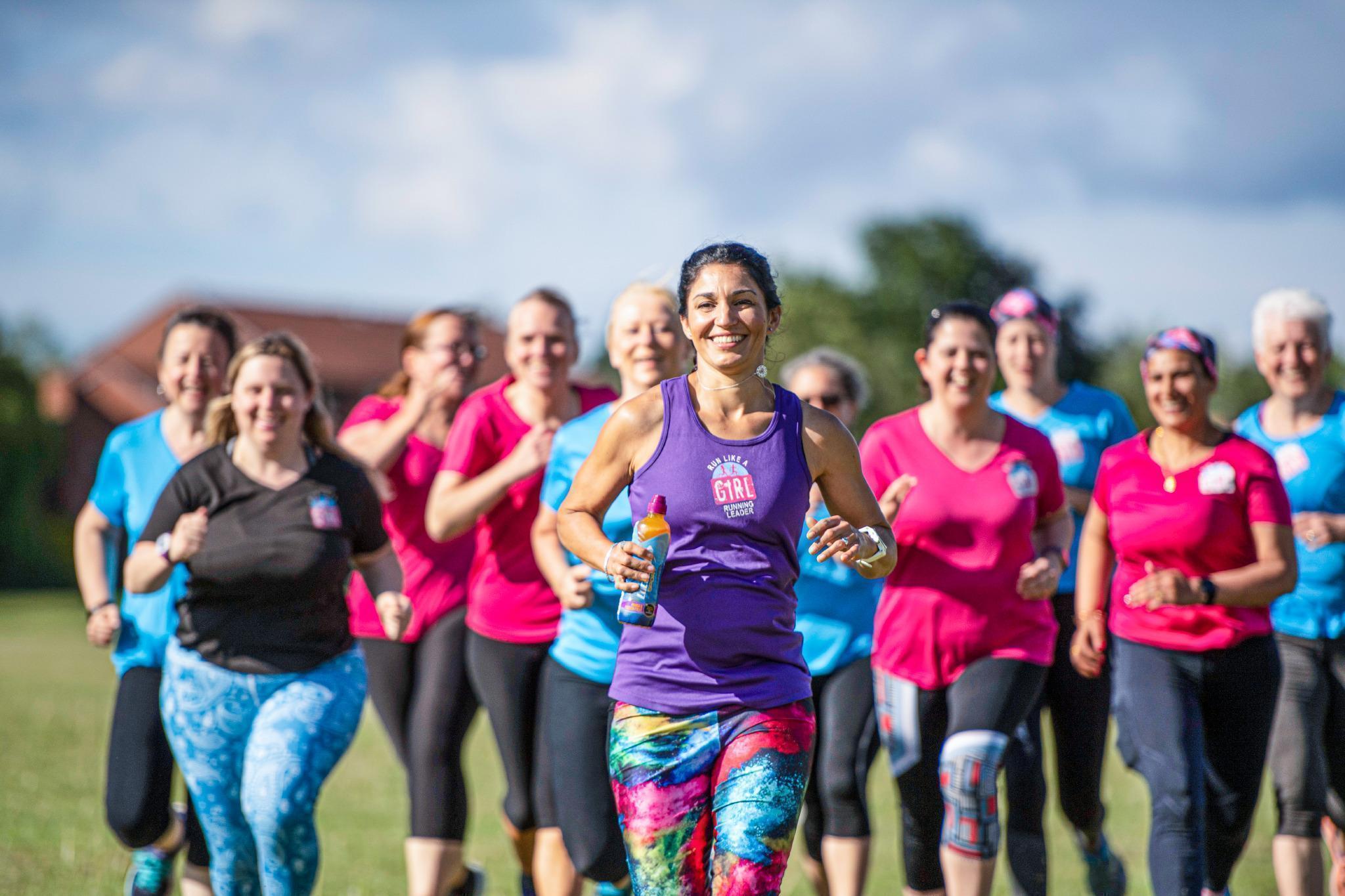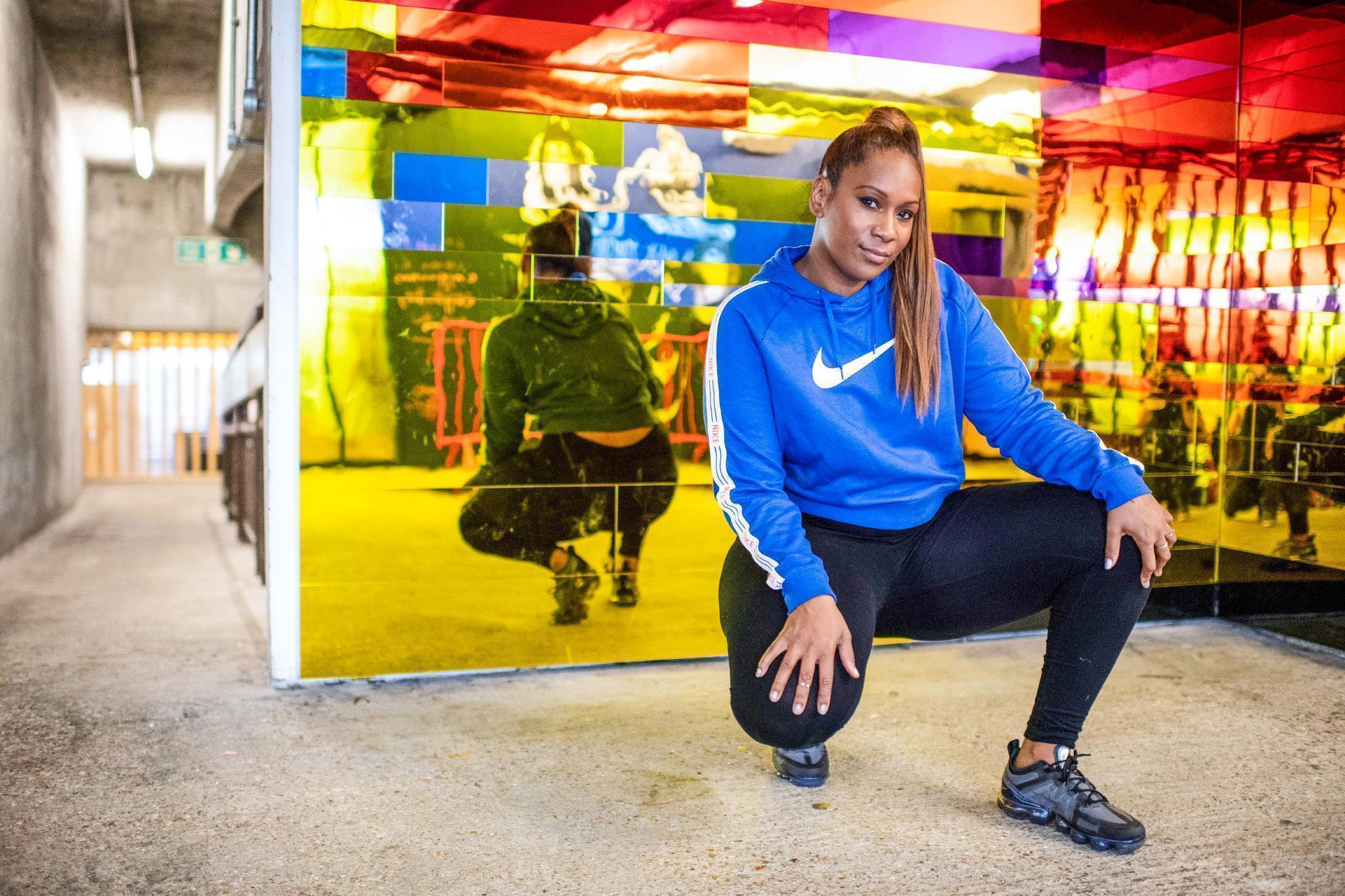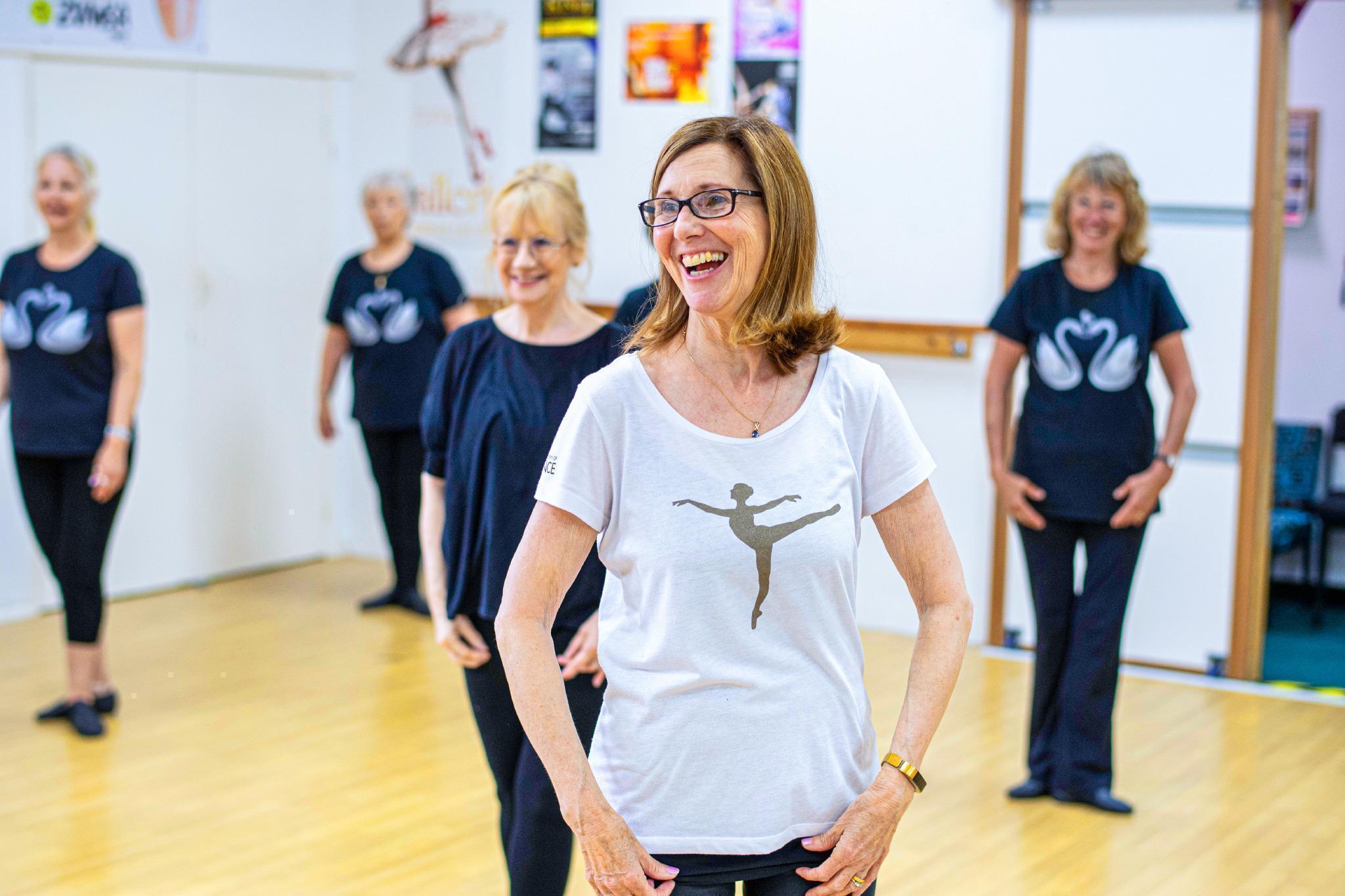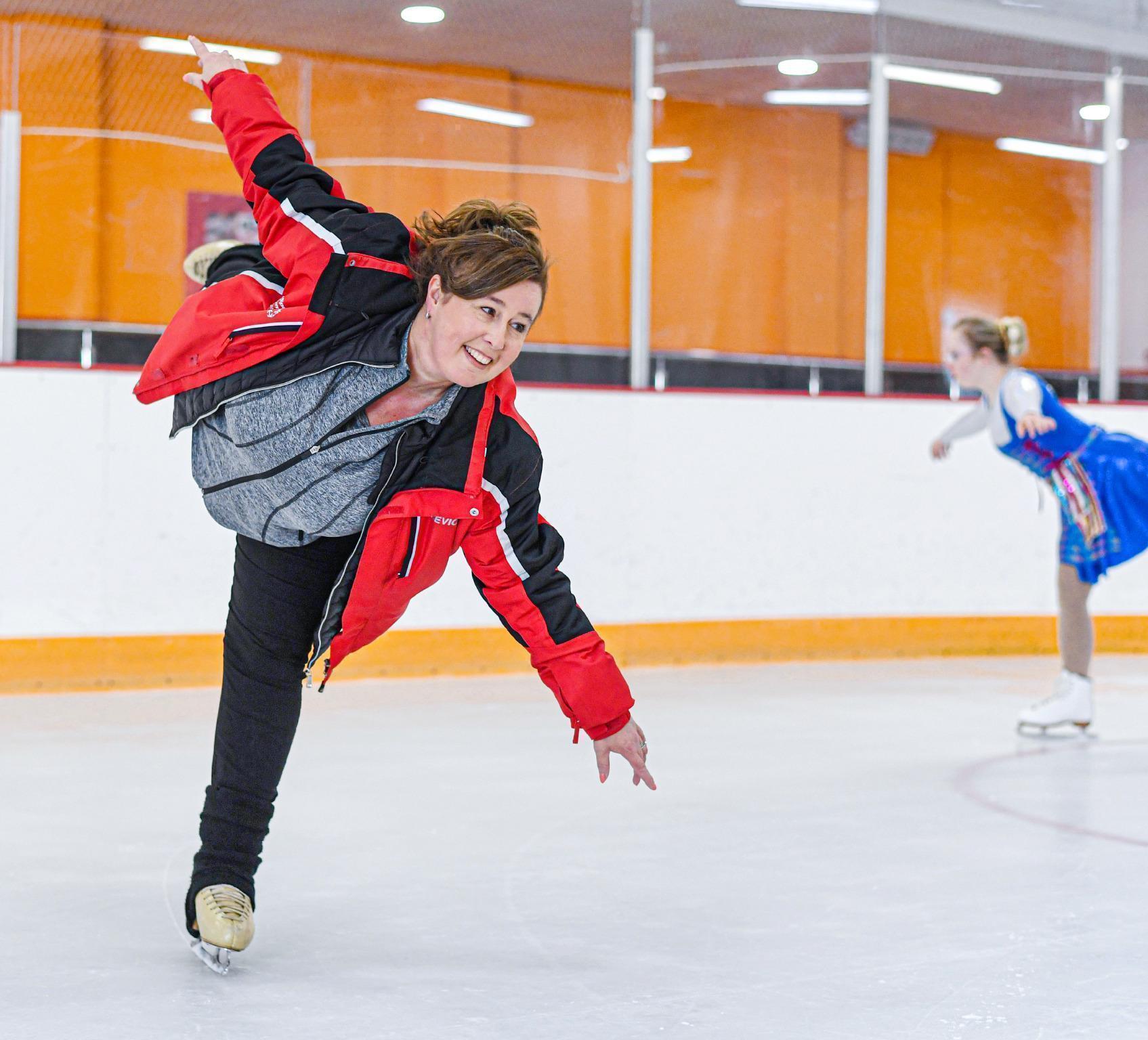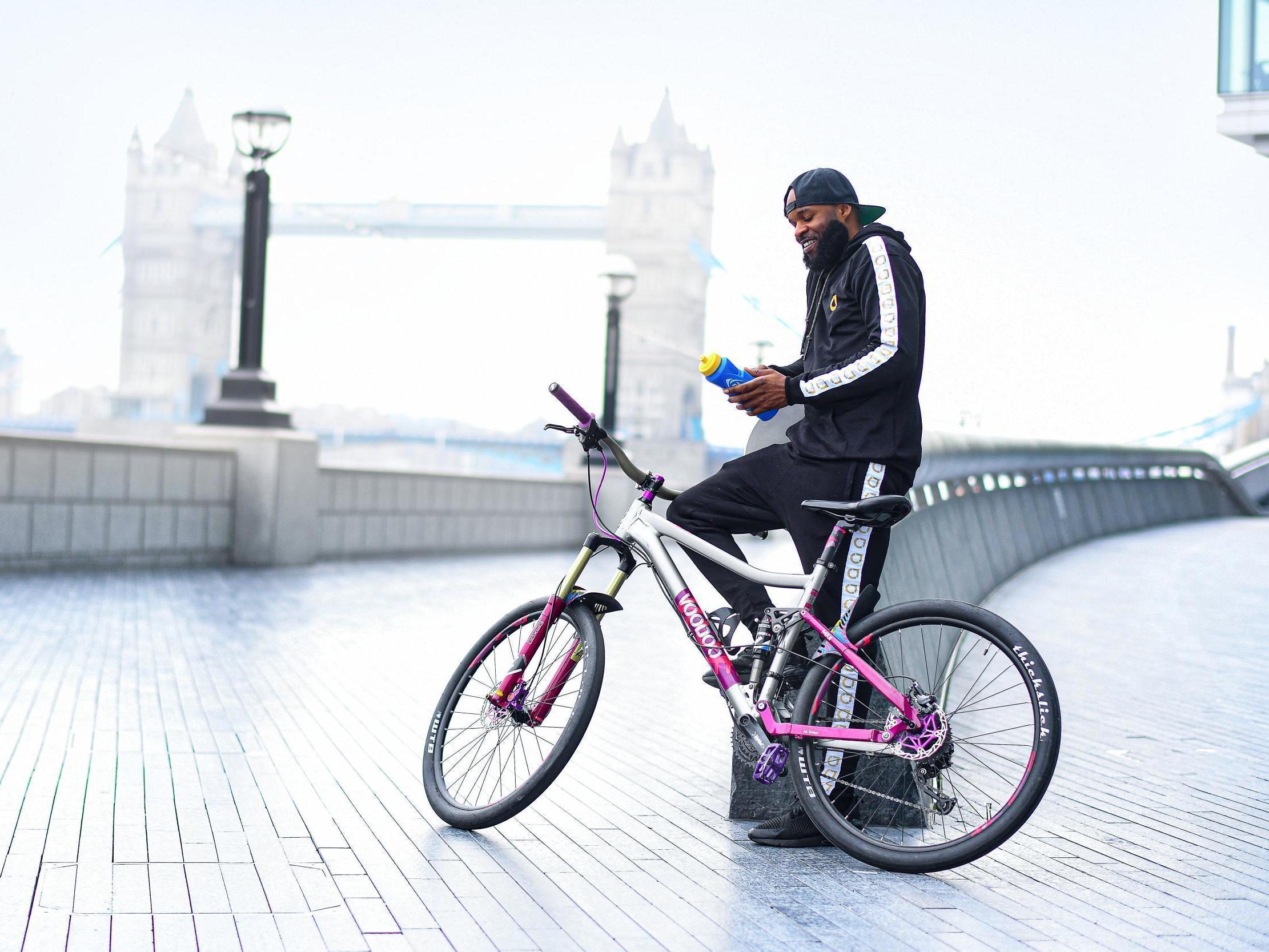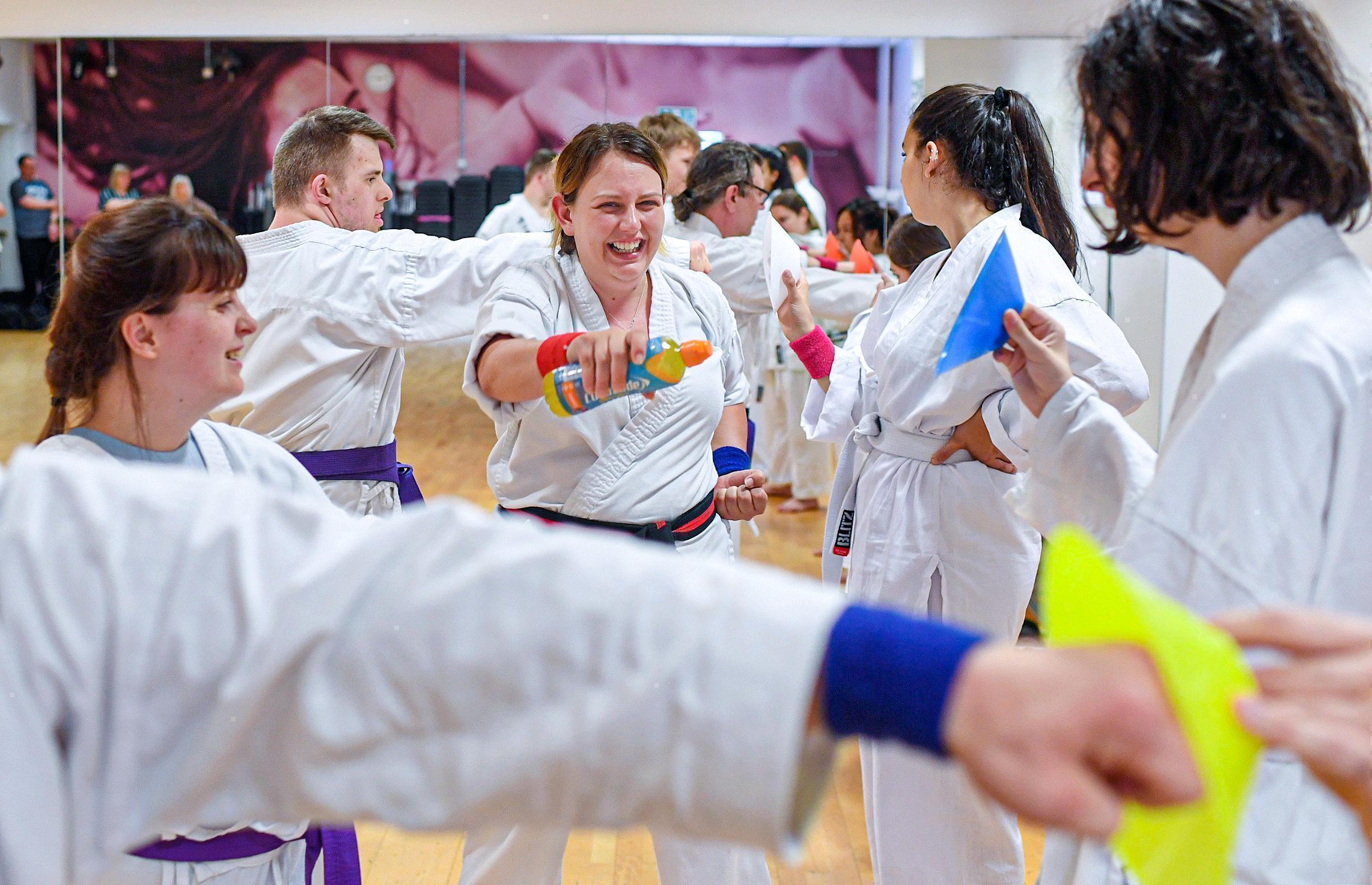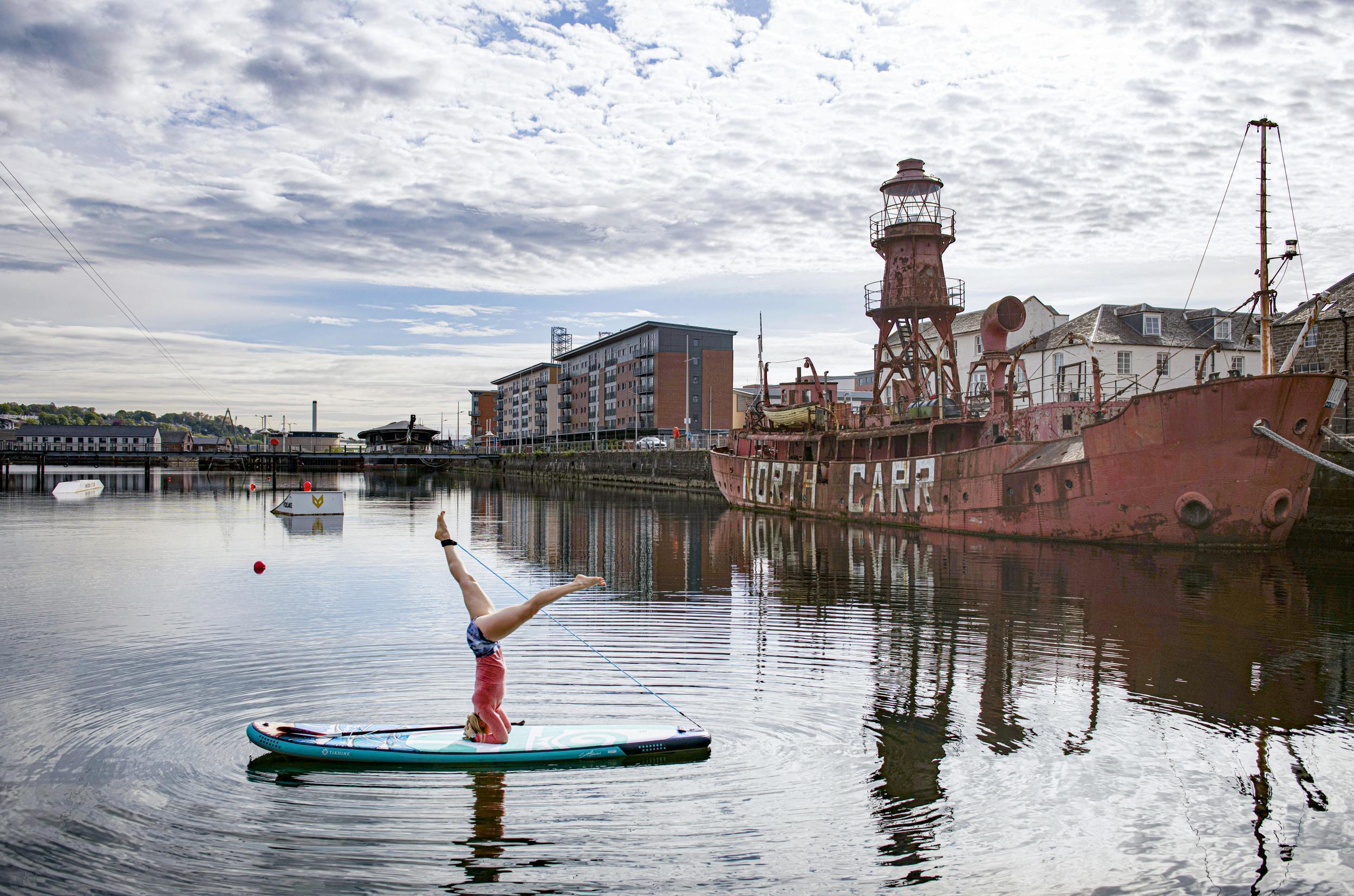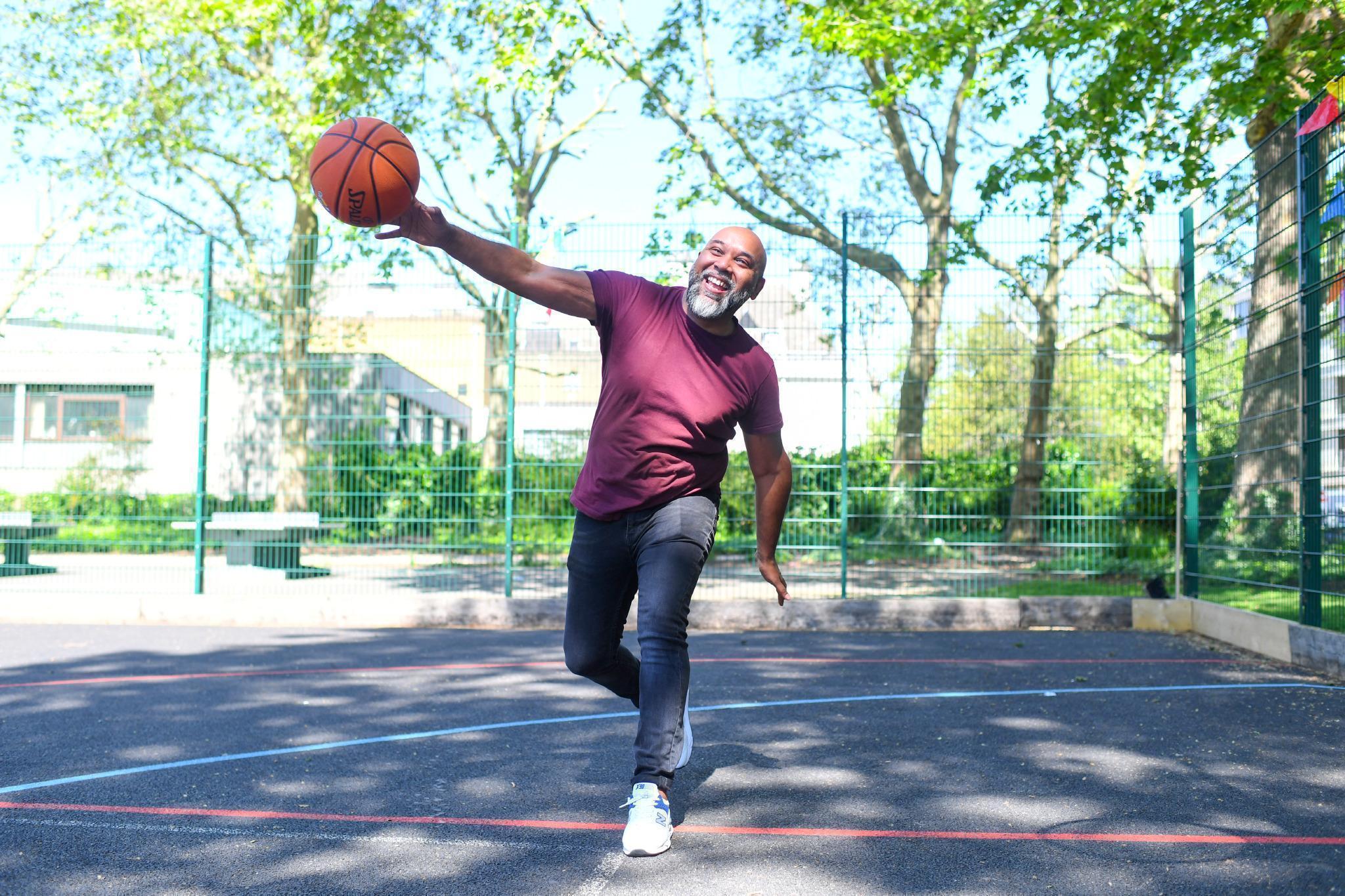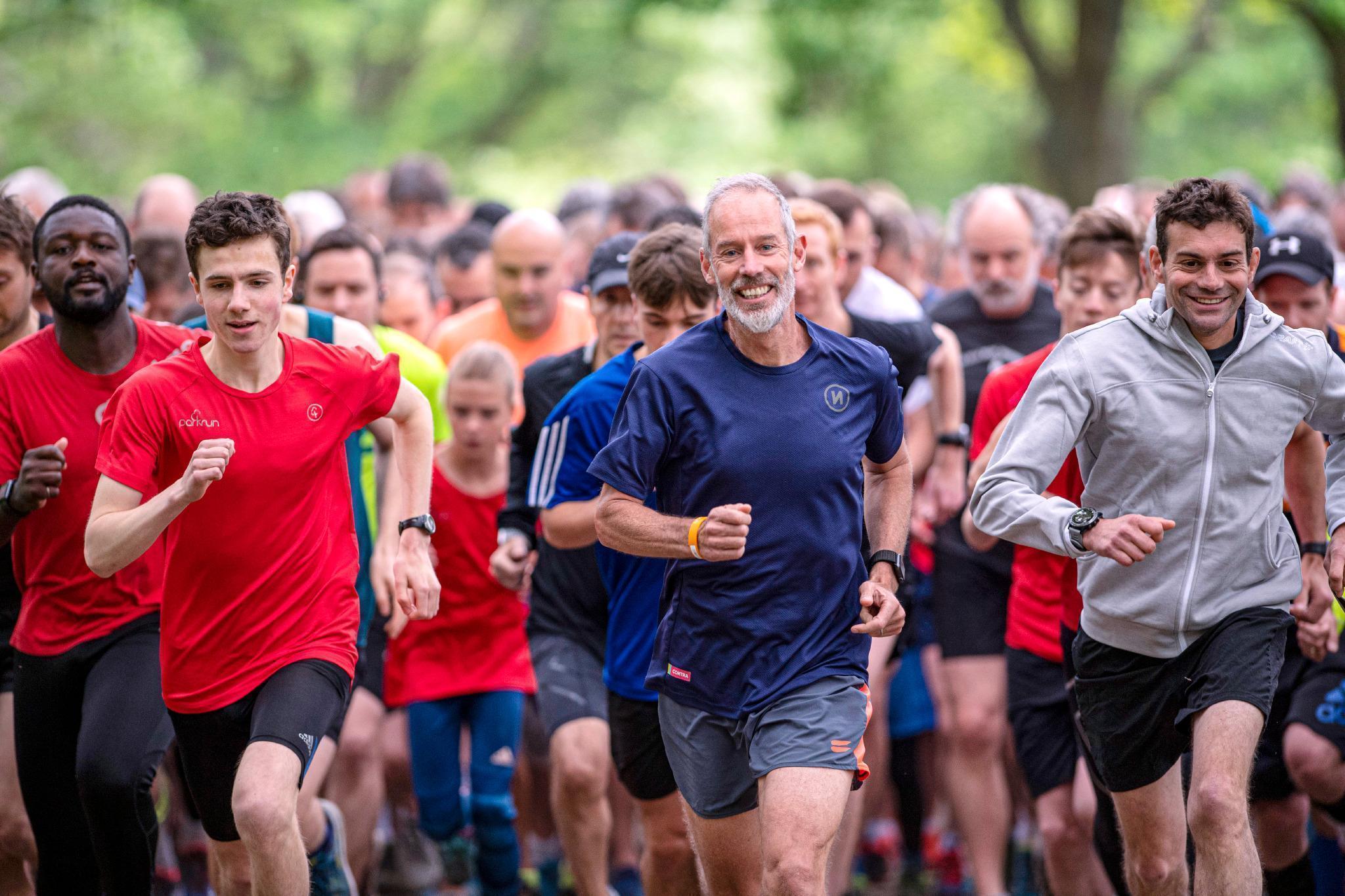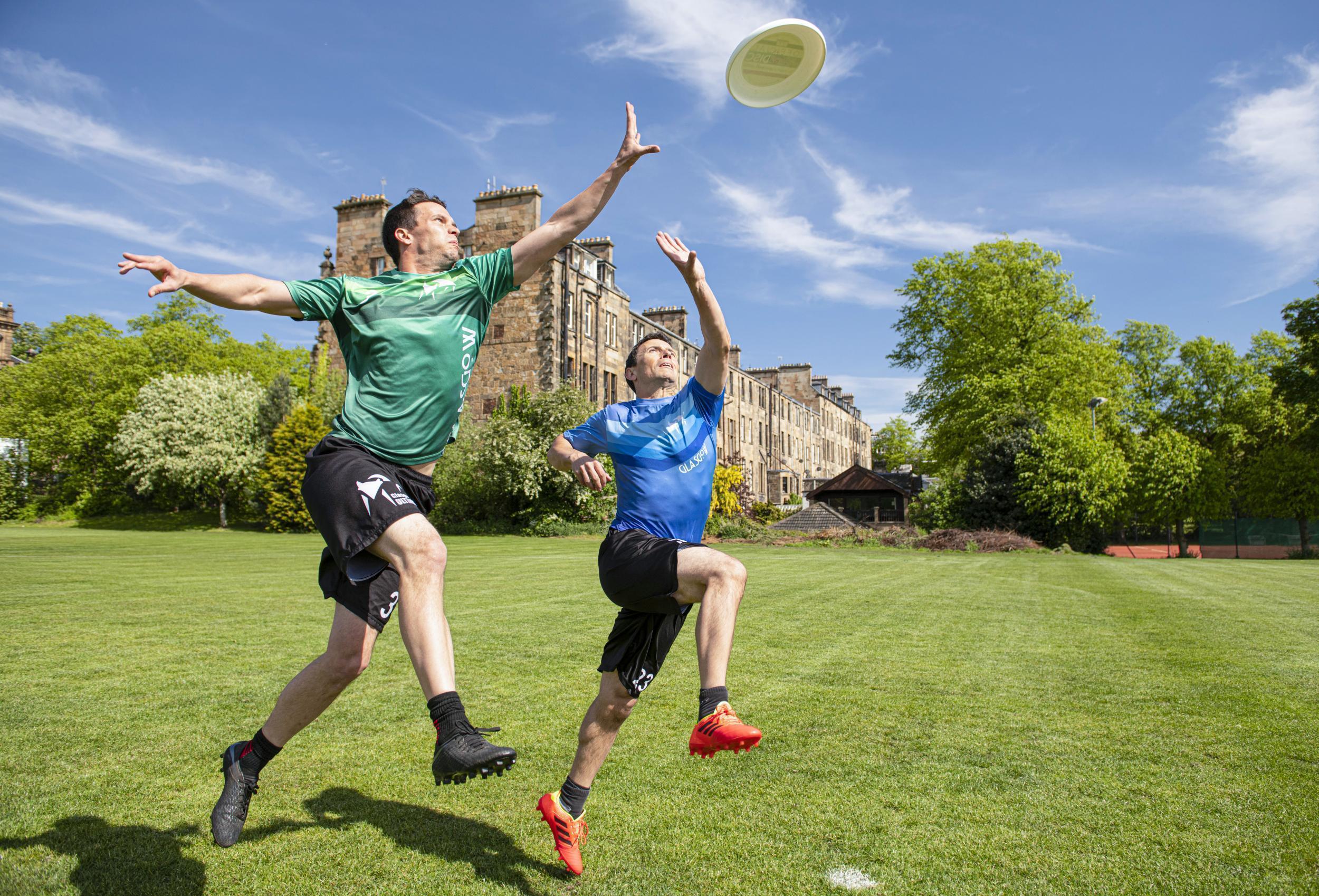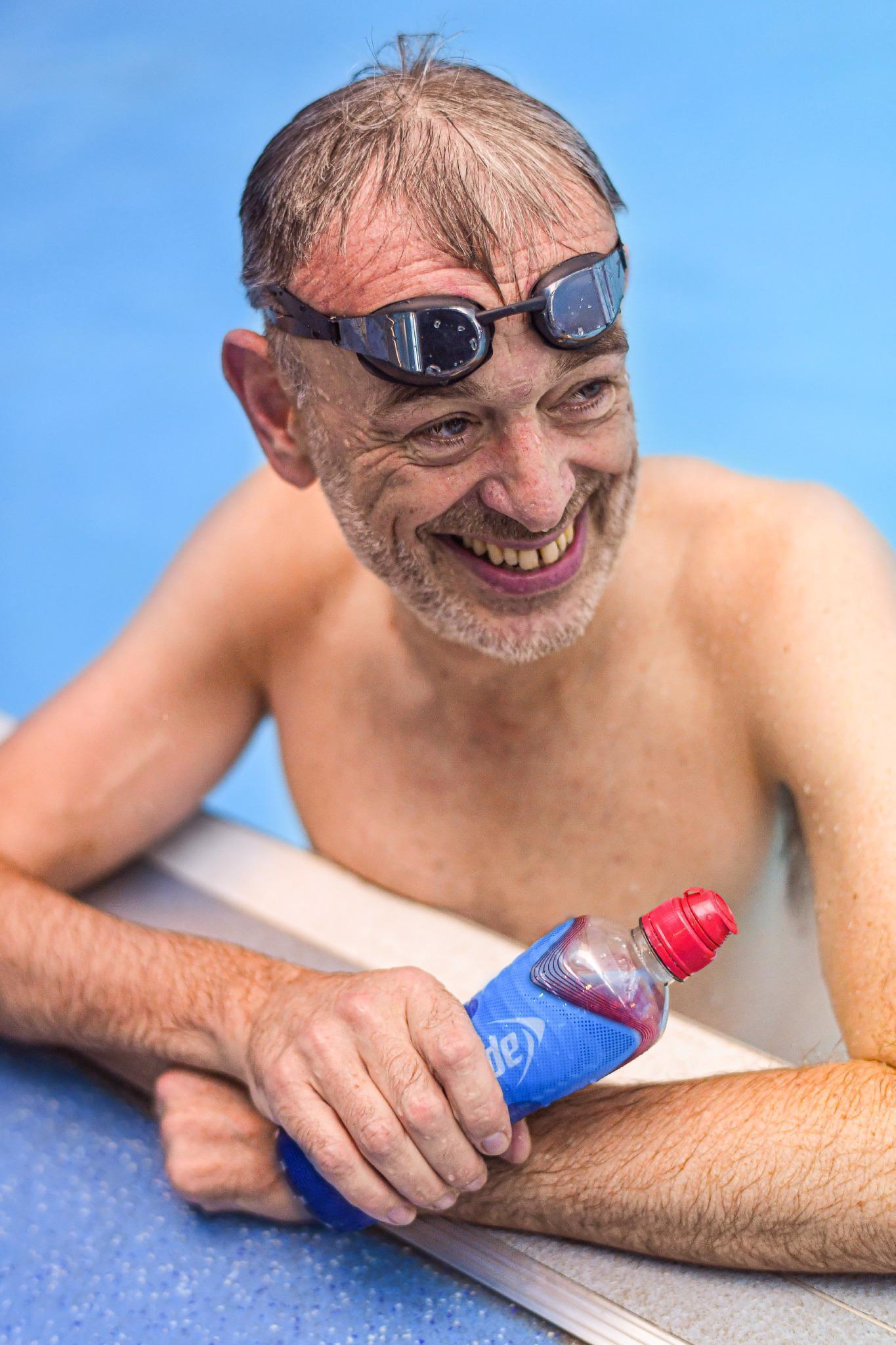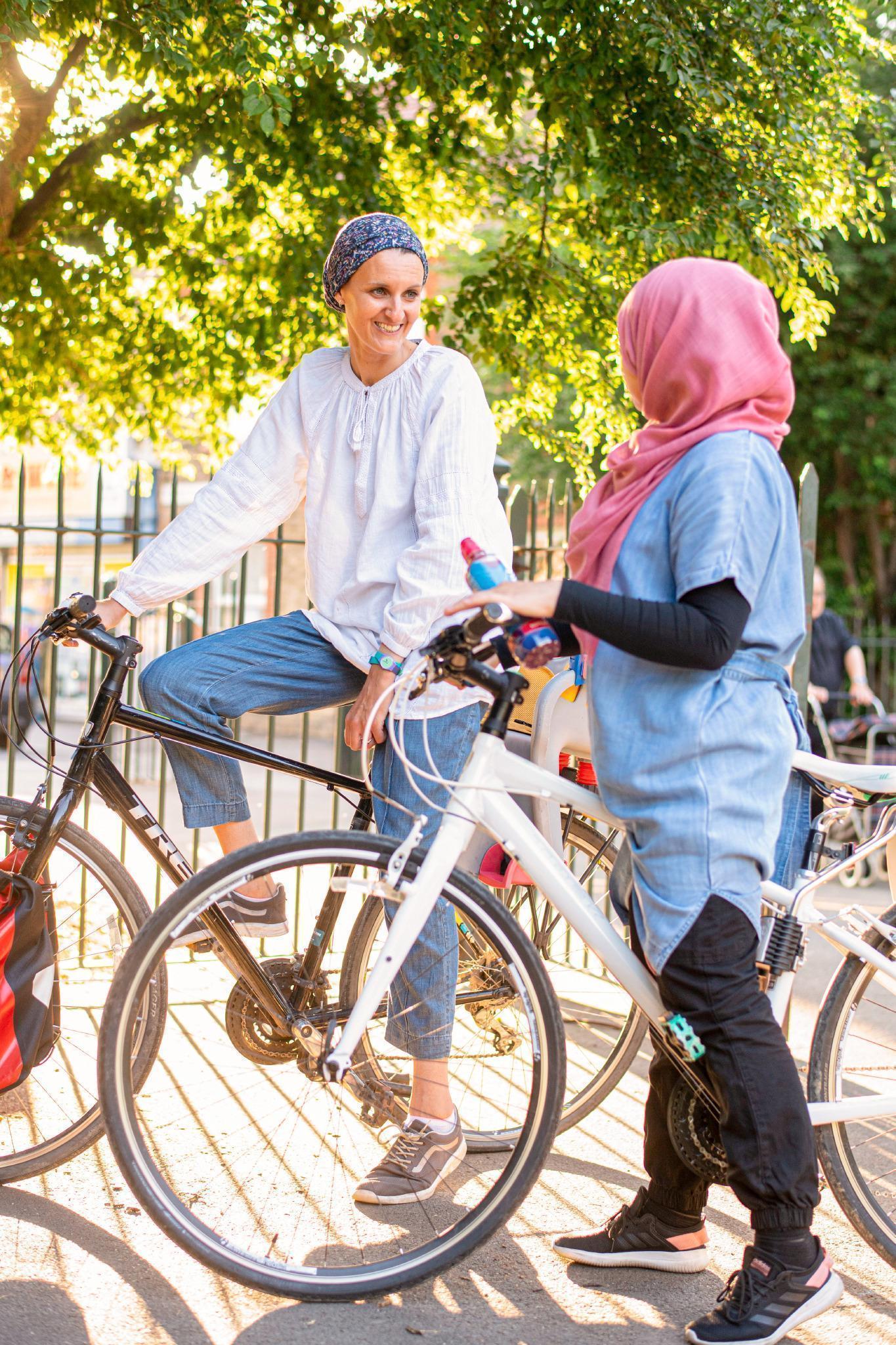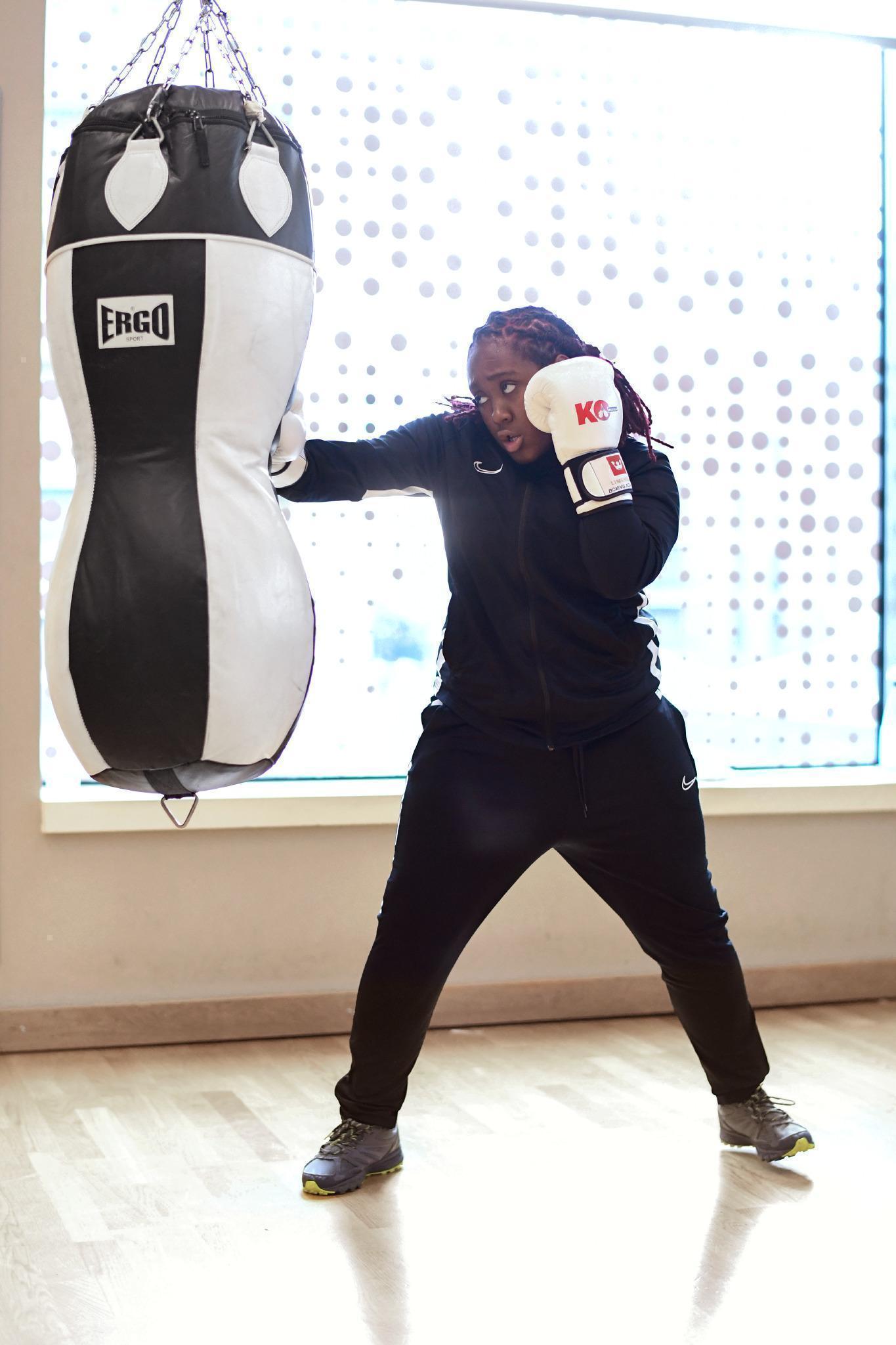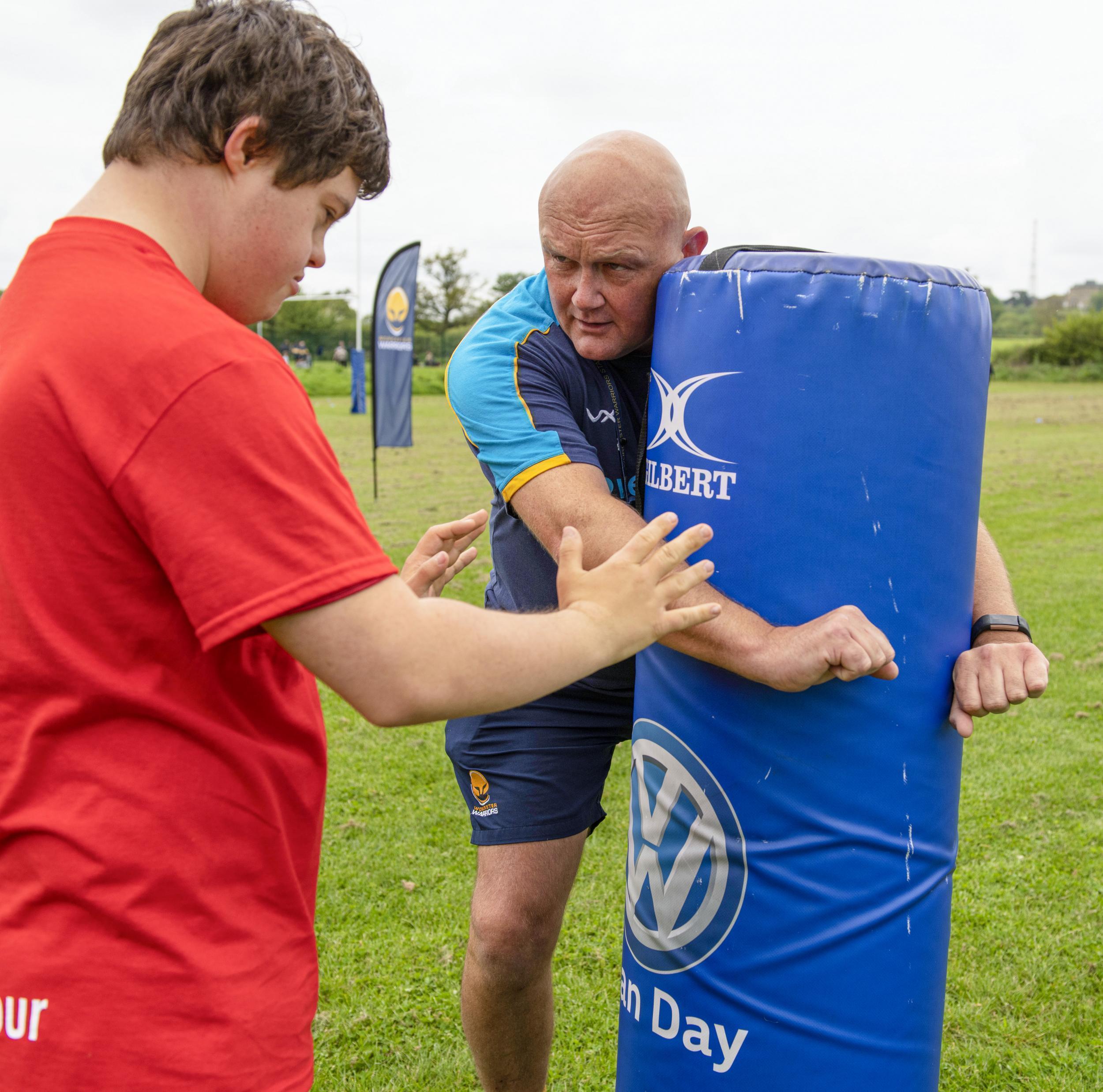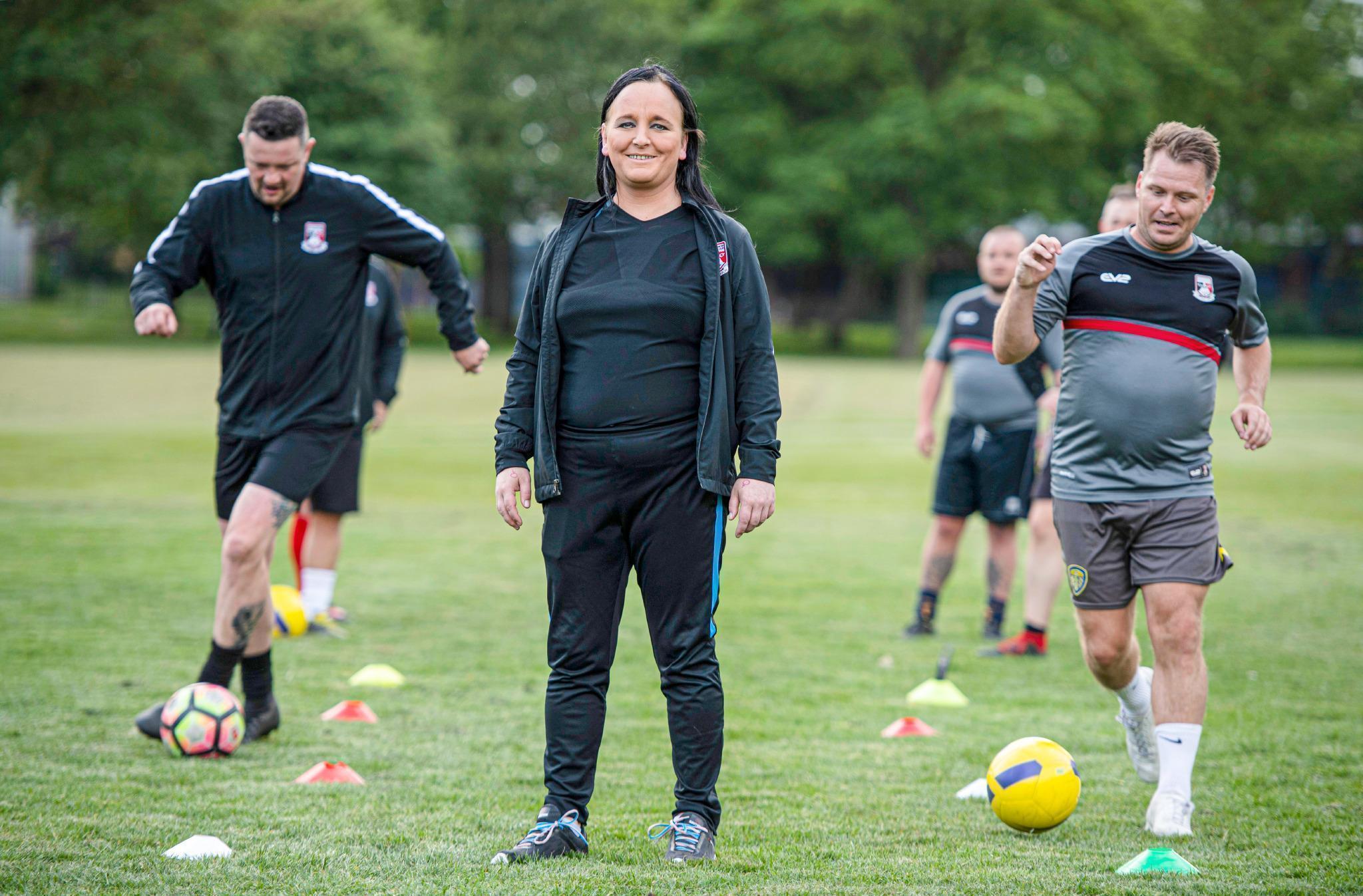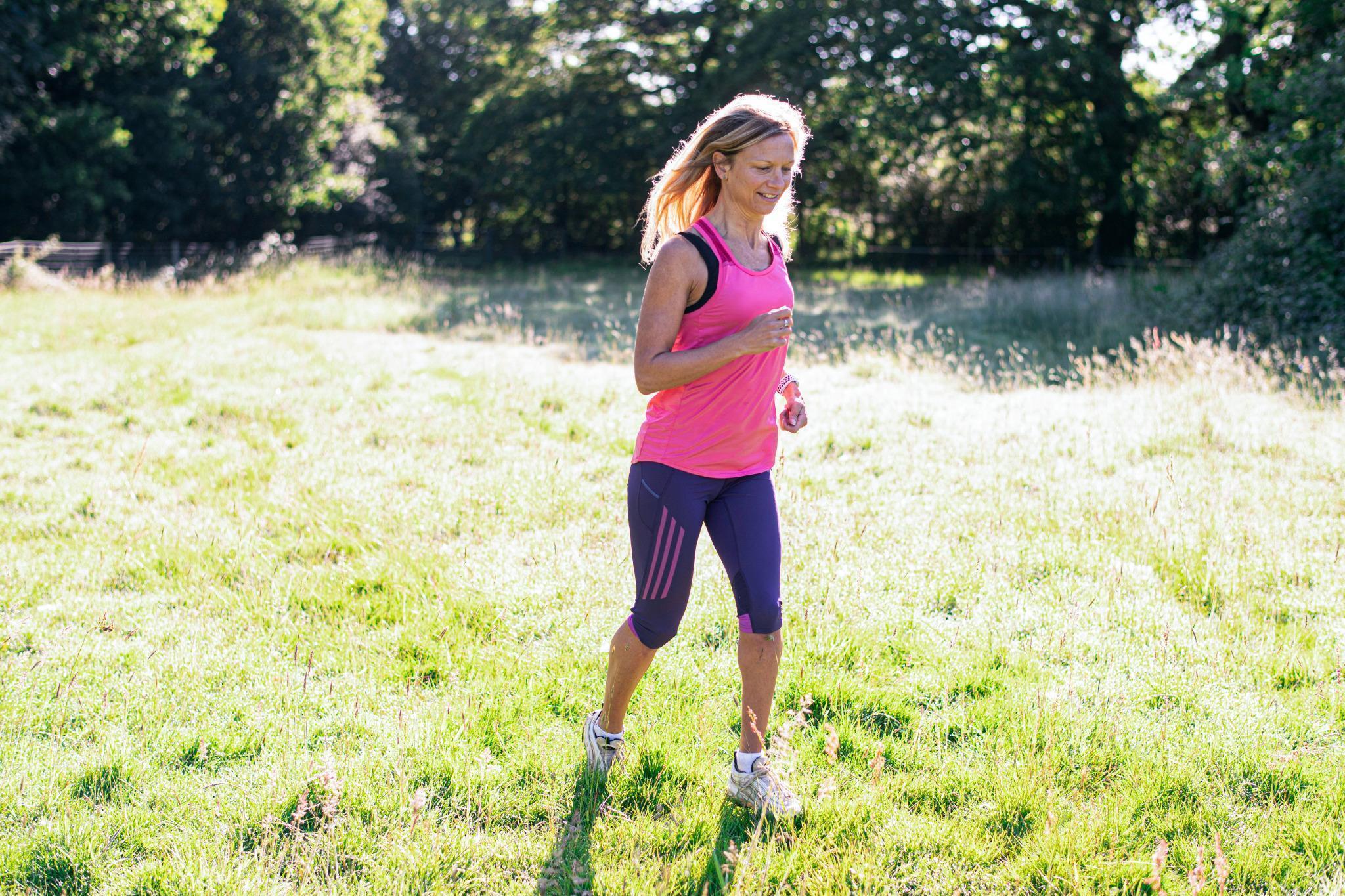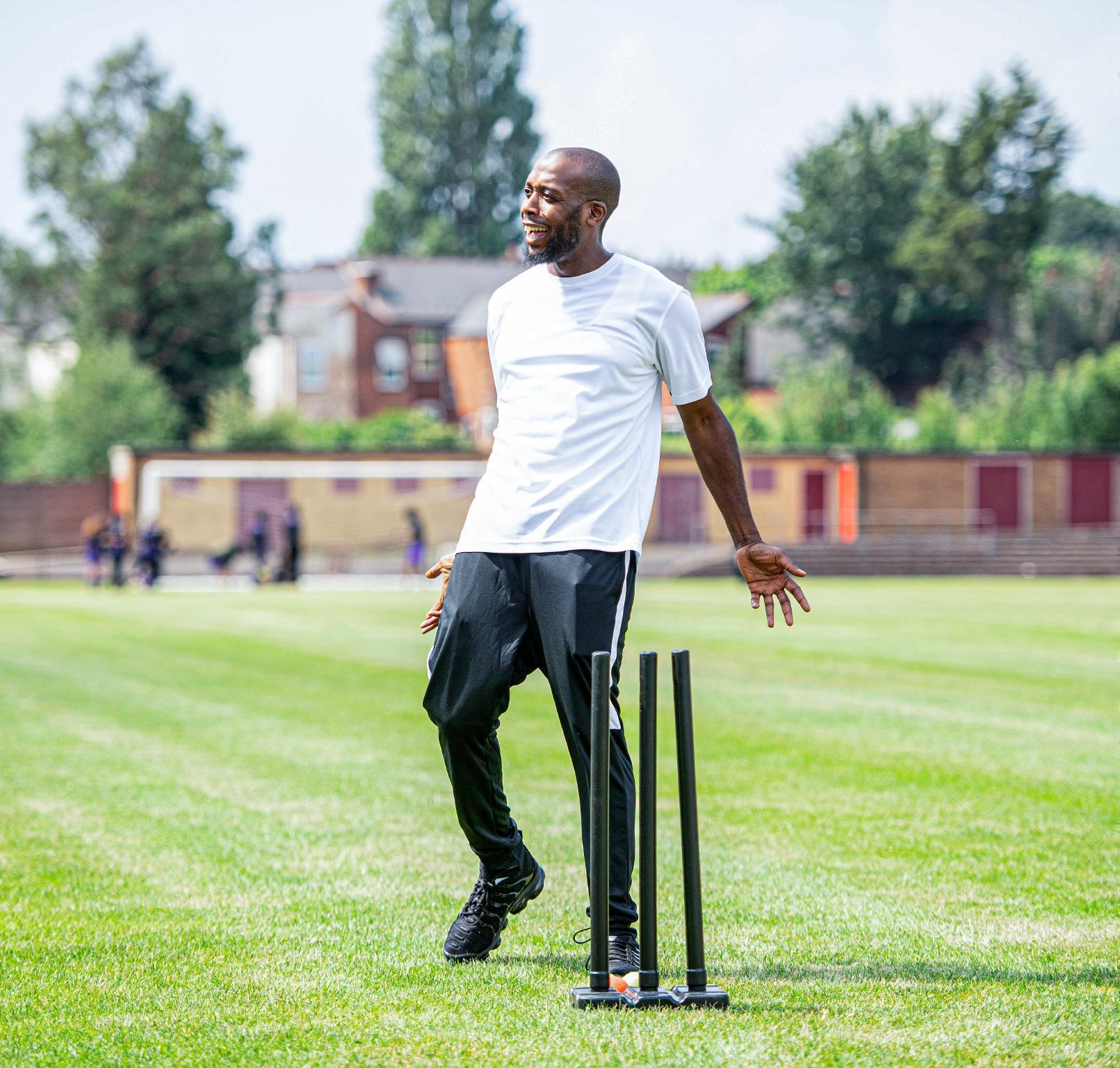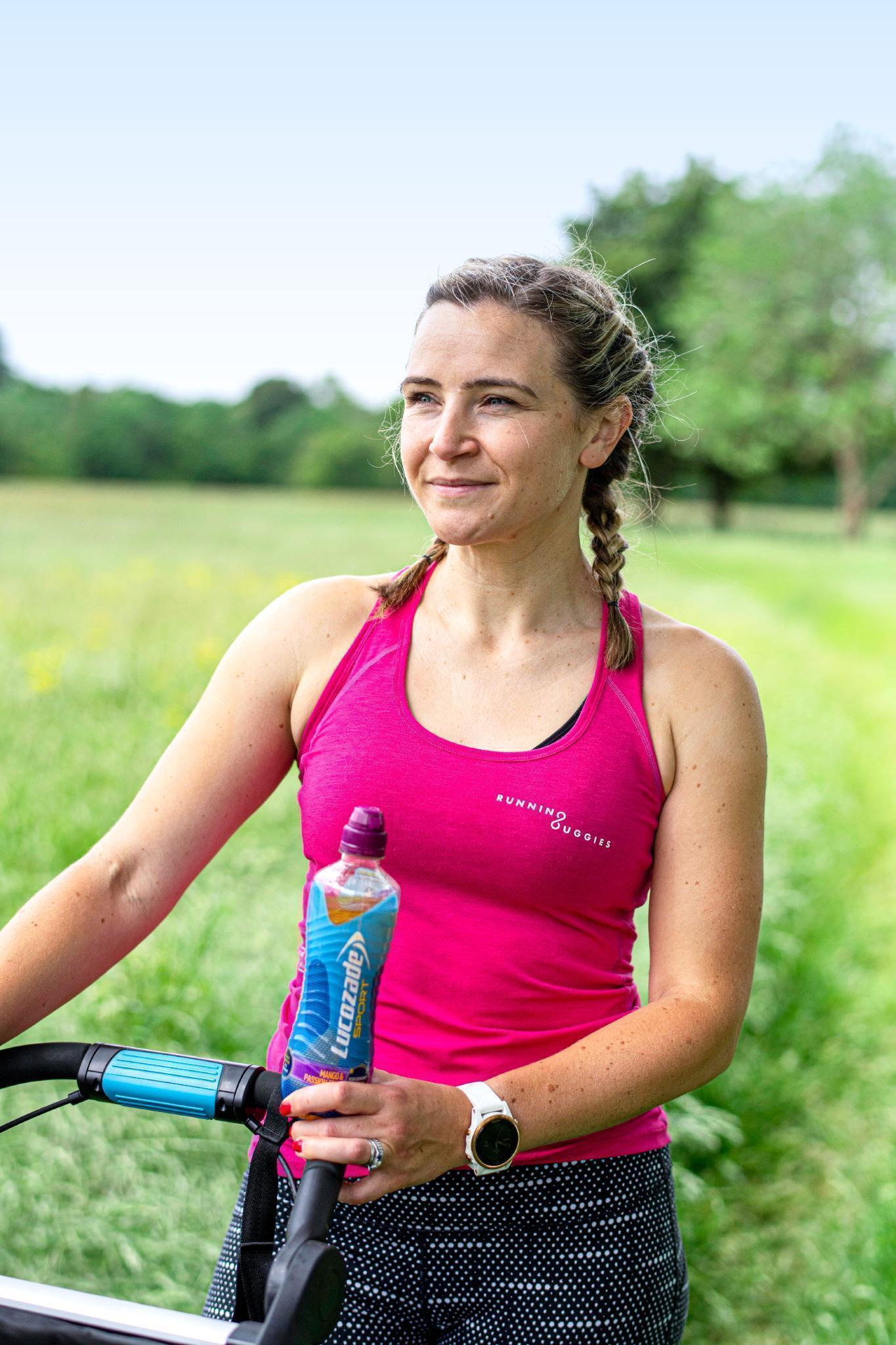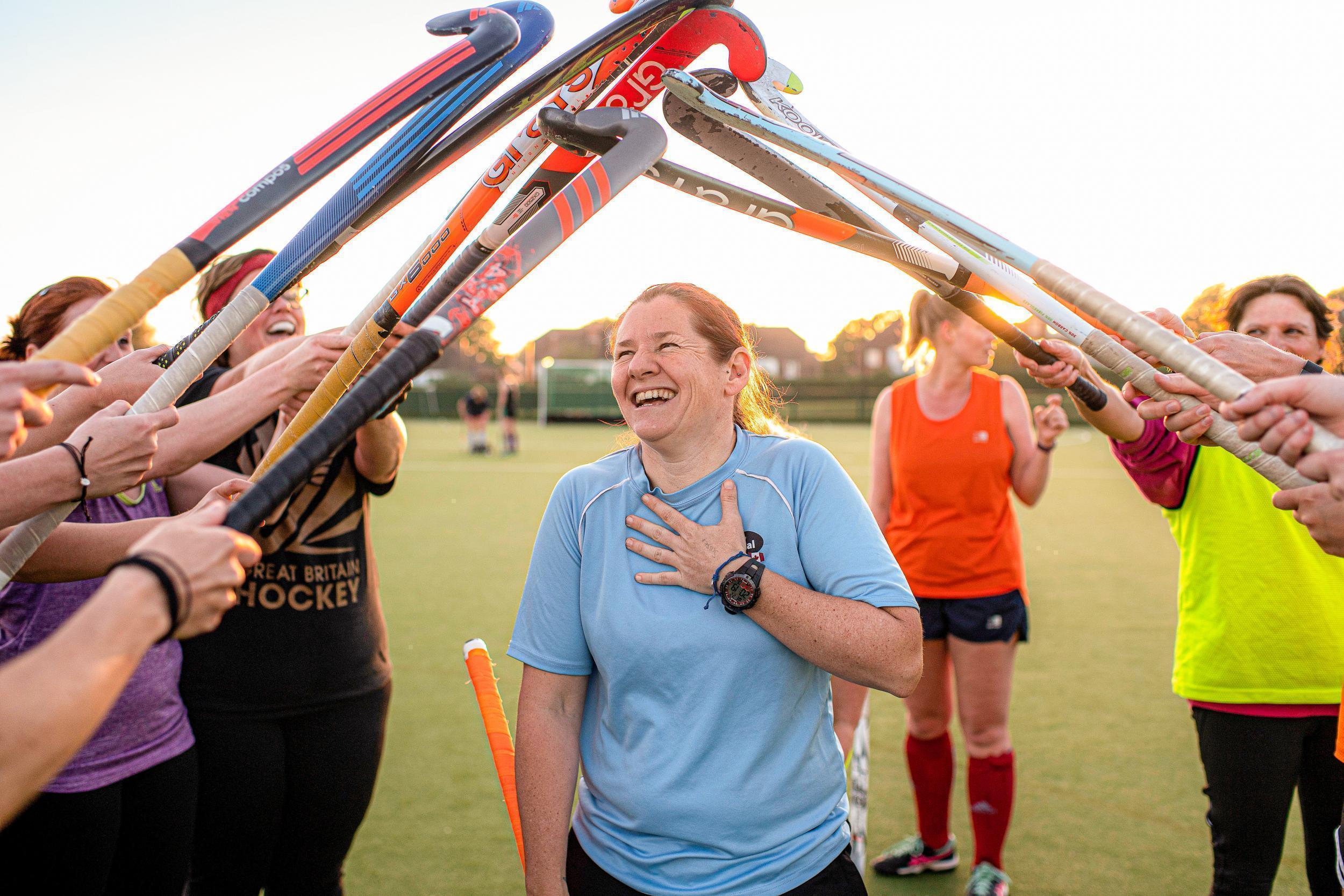For those of us who’ve never tried it, parkour – or freerunning – seems both slightly wild and wildly athletic; the reserve of agile, fearless young risk-takers. But spend just a few minutes in the company of Dan Edwardes, a global pioneer of the sport, and it’s more than likely that you’ll feel an urge to give it a go. Such is the passion with which Dan speaks about the discipline of negotiating terrain using only the natural strength of your body. And his total assurance that it really is for everyone.
“You don’t need any special skills or equipment to try it, you just have to be alive and to be able to move in some way,” says Dan, 44. “At its simplest, parkour is movement practice. It’s about refining how you move and teaching your body to move in new ways. I’ve taught classes to 18-month-old kids, up to veteran classes for the over 65s. The oldest member of our classes is a 91-year-old..”
As a child Dan fell in love with martial arts and practical movement skills, living in Japan for five years to study at a unique school of swordsmanship, before discovering parkour in 2002 when he was 27. “Back then, the discipline was so young and only a handful of people around the world practised it. There were only about 50 people who even knew what the word parkour meant. I remember seeing the film Yamakasi about the French originators of parkour and feeling like what I saw was the missing piece in my own training. The movement functionality the guys had and their ability to control their fear was astounding.”
Download the new Indpendent Premium app
Sharing the full story, not just the headlines
After tracking down the French founders and early practitioners on an online forum, Dan began training with the fledgling French and British communities. He quickly learnt from their approach, while adding his own knowledge and experience. Soon after he and two of the early French practitioners set up the UK company Parkour Generations as a means to teach and promote the discipline. Since then, the organisation has gone global and Dan estimates they’ve reached more than half a million people.
“We created the first classes teaching parkour anywhere in the world. Since then I’m lucky to have travelled extensively to help people find their way in movement, and I’ve seen some truly transformative stories. One woman from north England came to us after having a car crash that damaged her brain and left the right side of her body atrophied. It was hugely debilitating. She started practising daily movement practice and parkour helped rebuild her. Today she can even do somersaults.”
The Movers List
1/50 Al Hopkins, Running (Edinburgh)
2/50 Alex Gibson, Disability Sports (Brentwood)
3/50 Asa Waite, Basketball (Newport)
4/50 Bella Mackie, Running (London)
5/50 Benjamin Wimbush, Disability Sports (Manchester)
6/50 Born Barikor, HIIT (London)
7/50 Carl Adams, Running Wild (Ashford)
8/50 Dr. Catherine Walter, Powerlifting (Oxford)
9/50 Charlie Dark, Running (London)
10/50 Charlotte Roach, HIIT (Chester)
11/50 Charmaine Daley, Dance (Nottingham)
12/50 Dan Charlish, Snowsports (Hove)
13/50 Dan Edwardes, Parkour (London)
14/50 Dave Musgrove, Rock Climbing (Leeds)
15/50 Dave Player, Motorsports (Newbury)
16/50 Dee Ripoll, Surfer (Edinburgh)
17/50 Edwina Brocklesby, Community Sports (London)
18/50 Francesca Lewis, Tennis (Swansea)
19/50 Gundeep Anand, Street Football (London)
20/50 Hannah Hawkey, Dance (Plymouth)
21/50 Helen Mackenzie, Netball (Ripon)
22/50 Ivo Gormley, Running (London)
23/50 Jen Blackwell, Dance (Preston)
24/50 Jess Melia, Skateboarding (Leeds)
25/50 John Croot, Walking Football (Chesterfield)
26/50 Josh Landmann, Para-athletics (Poulton-Le-Flyde)
27/50 Kate Rew, Outdoor Swimming (Somerset)
28/50 Katee Hui, Football (London)
29/50 Keith Whitton, Rink Hockey (Doncaster)
30/50 Khadijah Safari, Martial Arts (Milton Keynes)
31/50 Lauren Gregory, Running (Leamington Spa)
32/50 Leanne Davies, Running (Leatherhead)
33/50 Leanne Pero, Dance (London)
34/50 Linda Hesselden, Ballet (Plymouth)
35/50 Louisa Chatwin, Ice-Skating (Selston)
36/50 Mac Ferrari, Cycling (London)
37/50 Melanie Timberlake, Martial Arts (Aylesbury)
38/50 Michaella Robb, Paddleboard Yoga (Angus)
39/50 Oliur Rahman, Community Sports (London)
40/50 Paul Sinton-Hewitt, Running (London)
41/50 Phil & Shaun Webb, Ultimate Frisbee (Glasgow)
42/50 Philip Collins, Swimming (London)
43/50 Sarah Javaid, Cycling (London)
44/50 Shannia Richardson-Gordon, Boxing (London)
45/50 Simon Northcott, Disability Sports (Worchester)
46/50 Skye Stewart, Football (Wolverhampton)
47/50 Sophia Warner, Sprinting (Ockley)
48/50 Tanayah Sam, Cricket (Birmingham)
49/50 Wendy Rumble, Running (Maidenhead)
50/50 Wendy Russell, Hockey (Brighton & Hove)
1/50 Al Hopkins, Running (Edinburgh)
2/50 Alex Gibson, Disability Sports (Brentwood)
3/50 Asa Waite, Basketball (Newport)
4/50 Bella Mackie, Running (London)
5/50 Benjamin Wimbush, Disability Sports (Manchester)
6/50 Born Barikor, HIIT (London)
7/50 Carl Adams, Running Wild (Ashford)
8/50 Dr. Catherine Walter, Powerlifting (Oxford)
9/50 Charlie Dark, Running (London)
10/50 Charlotte Roach, HIIT (Chester)
11/50 Charmaine Daley, Dance (Nottingham)
12/50 Dan Charlish, Snowsports (Hove)
13/50 Dan Edwardes, Parkour (London)
14/50 Dave Musgrove, Rock Climbing (Leeds)
15/50 Dave Player, Motorsports (Newbury)
16/50 Dee Ripoll, Surfer (Edinburgh)
17/50 Edwina Brocklesby, Community Sports (London)
18/50 Francesca Lewis, Tennis (Swansea)
19/50 Gundeep Anand, Street Football (London)
20/50 Hannah Hawkey, Dance (Plymouth)
21/50 Helen Mackenzie, Netball (Ripon)
22/50 Ivo Gormley, Running (London)
23/50 Jen Blackwell, Dance (Preston)
24/50 Jess Melia, Skateboarding (Leeds)
25/50 John Croot, Walking Football (Chesterfield)
26/50 Josh Landmann, Para-athletics (Poulton-Le-Flyde)
27/50 Kate Rew, Outdoor Swimming (Somerset)
28/50 Katee Hui, Football (London)
29/50 Keith Whitton, Rink Hockey (Doncaster)
30/50 Khadijah Safari, Martial Arts (Milton Keynes)
31/50 Lauren Gregory, Running (Leamington Spa)
32/50 Leanne Davies, Running (Leatherhead)
33/50 Leanne Pero, Dance (London)
34/50 Linda Hesselden, Ballet (Plymouth)
35/50 Louisa Chatwin, Ice-Skating (Selston)
36/50 Mac Ferrari, Cycling (London)
37/50 Melanie Timberlake, Martial Arts (Aylesbury)
38/50 Michaella Robb, Paddleboard Yoga (Angus)
39/50 Oliur Rahman, Community Sports (London)
40/50 Paul Sinton-Hewitt, Running (London)
41/50 Phil & Shaun Webb, Ultimate Frisbee (Glasgow)
42/50 Philip Collins, Swimming (London)
43/50 Sarah Javaid, Cycling (London)
44/50 Shannia Richardson-Gordon, Boxing (London)
45/50 Simon Northcott, Disability Sports (Worchester)
46/50 Skye Stewart, Football (Wolverhampton)
47/50 Sophia Warner, Sprinting (Ockley)
48/50 Tanayah Sam, Cricket (Birmingham)
49/50 Wendy Rumble, Running (Maidenhead)
50/50 Wendy Russell, Hockey (Brighton & Hove)
Not that somersaults are mandatory. Dan is keen to stress that parkour is about being in full control of your movement and gradually realising your potential, rather than pushing yourself to jump across rooftops on day one.
“In the early days we went too far too fast,” says Dan. “There was very little teaching, I was just trying to keep up with the founders. I’d push myself, and would sometimes learn the hard way. But learning from that has made me a better teacher.
“The aim is to help people be as capable as they can be now, but with the idea of still being capable in 20, 30, 40 years – and to always keep improving.”
Dan, who lives in South Wimbledon, mostly teaches international workshops and courses but still has a hand in the original East London Parkour Generations Academy. In 2018 he also started working with the UK government to create the governing body Parkour UK. In Britain today there are thought to be over 100,000 parkour practitioners, a figure bolstered two years ago when the UK became the first country to recognise parkour as a sport. The status gave it the right to apply for government grants and National Lottery funding, and even to be practised in schools via the Parkour For Schools Programme. It remains unrecognised in most other countries.
Given parkour’s erstwhile risky and controversial image, you might well wince at the idea of it popping up in PE timetables. But Dan is quick to dispel any lingering myths surrounding its danger.
“Professional athletes in any sport accumulate injuries,” says Dan. “But in 20 years I’ve only broken an arm and a bone in my foot, both of which healed very quickly. It’s what you learn from injury that is important; injury is just feedback about your movement that something is not right, which forces you to assess it. But statistically parkour is very safe. If you look at the number of injuries per thousand hours of practice the statistic is around 4.5 injuries, whereas football is roughly 11, and running is 24. Parkour is safer than almost every traditional competitive sport.
“Parkour is the perfect antidote to inactivity and disengagement with physical education. It promotes movement and uses the great outdoors as a space to get active in. It’s all about helping people find the physical activity that appeals to them, and parkour is a fun, creative and innovative option.”
Dan extols parkour’s mental health benefits too, thanks to its holistic approach to movement and personal development, while harnessing the positive benefits of managing risk and fear.
“That’s why we do what we do, so it’s a huge honour to be recognised by Lucozade Sport’s Movers List for making an impact and helping people to move more,” he says. “As teachers, every day we see how incredibly powerful parkour is and the positive impact it can have. We train both the body and the brain to be healthy for the long-term, rather than just to get fit for a short term goal.”
For more information on parkour visit parkourgenerationslondon.com
For more information about the Movers List and to find local facilities and classes to move more, visit www.lucozadesport.com/the-movers-list
Source: Read Full Article
